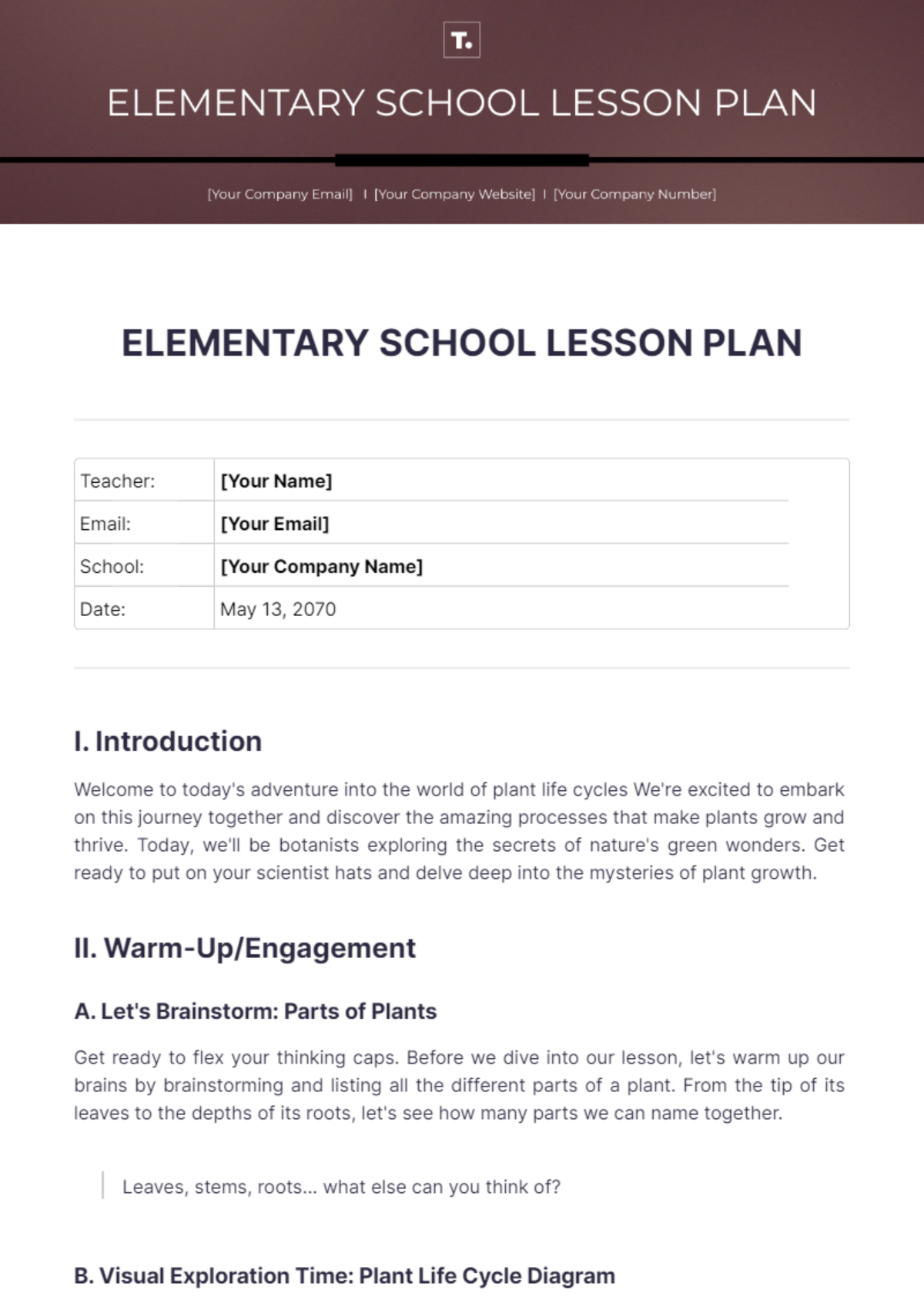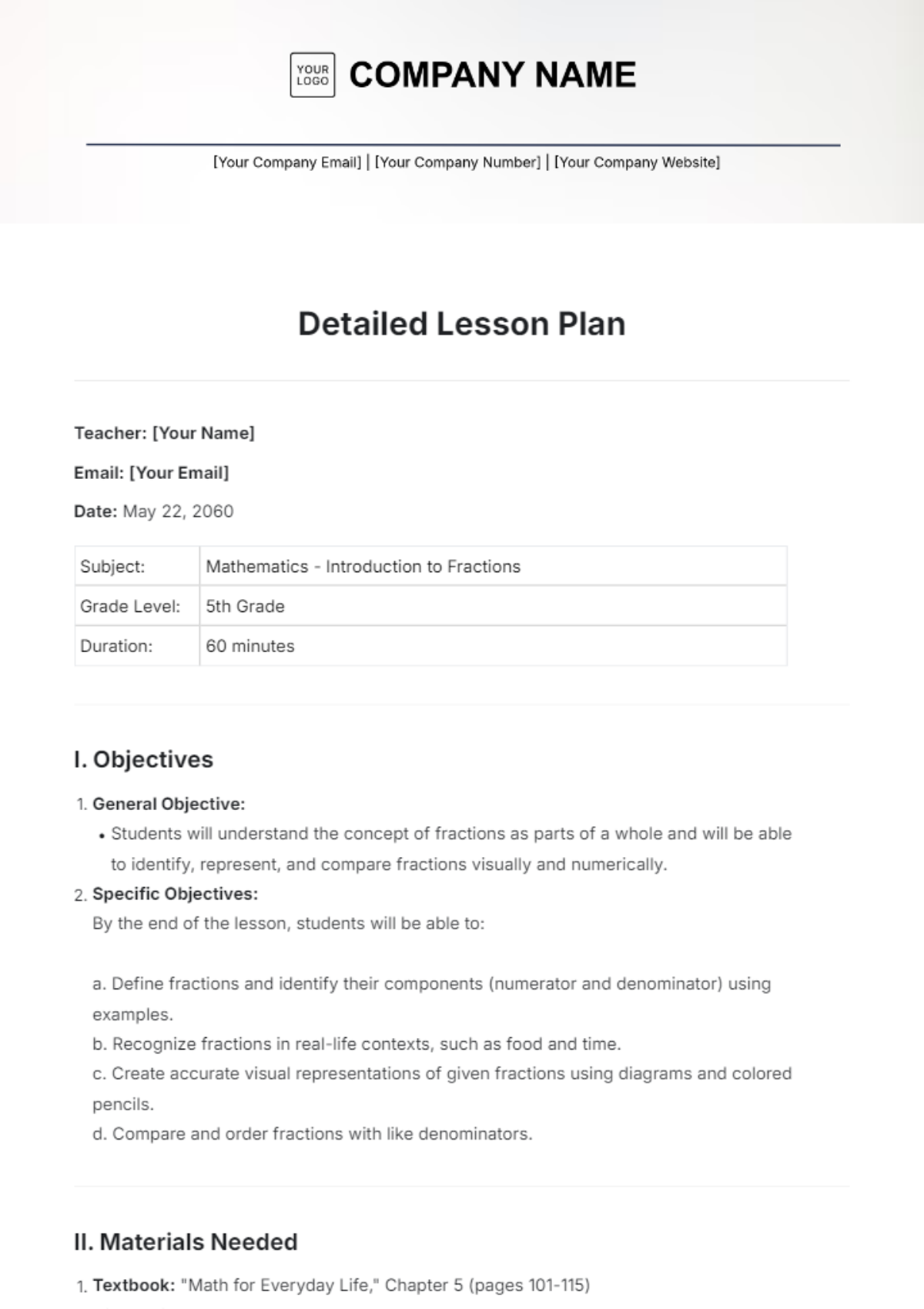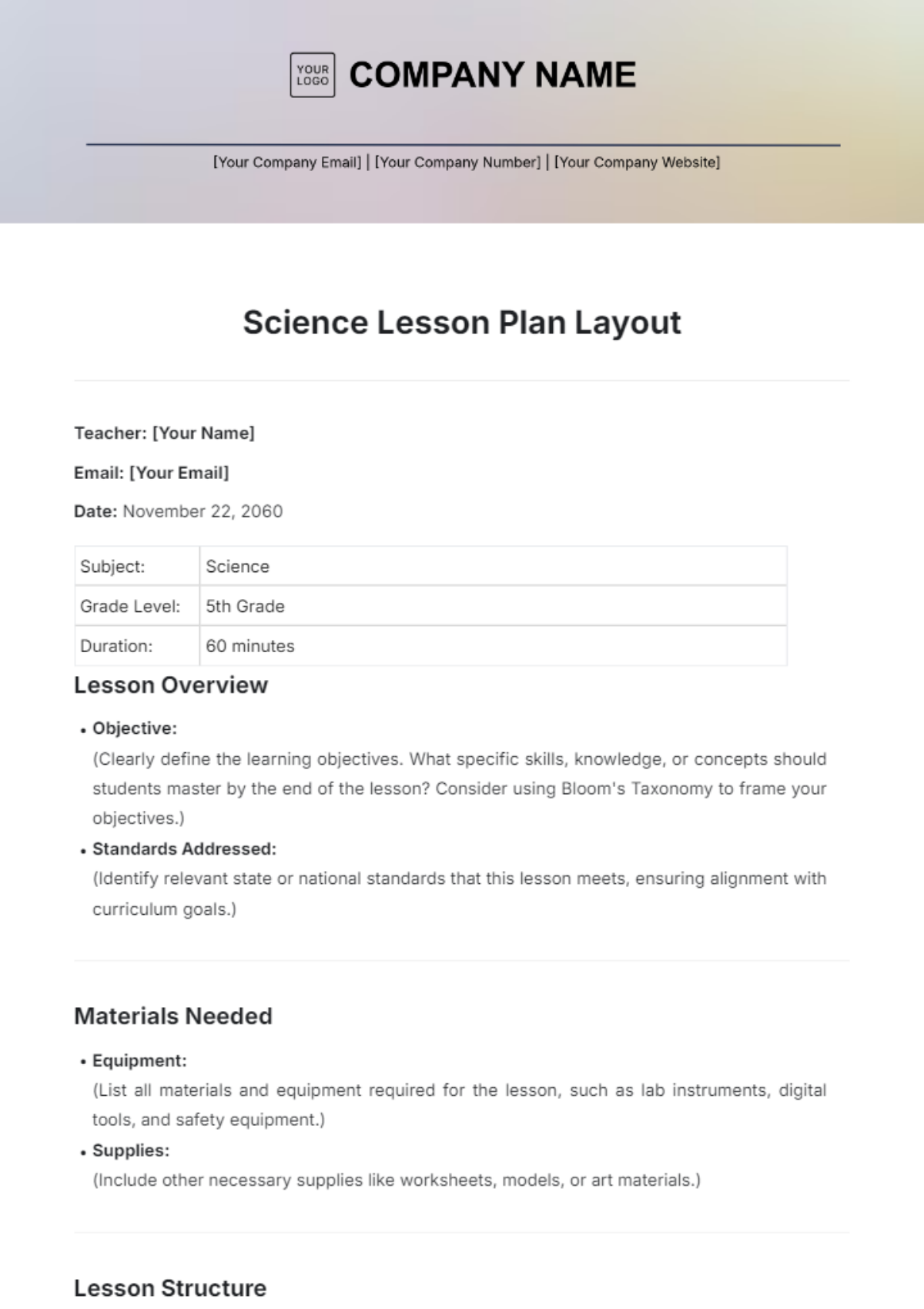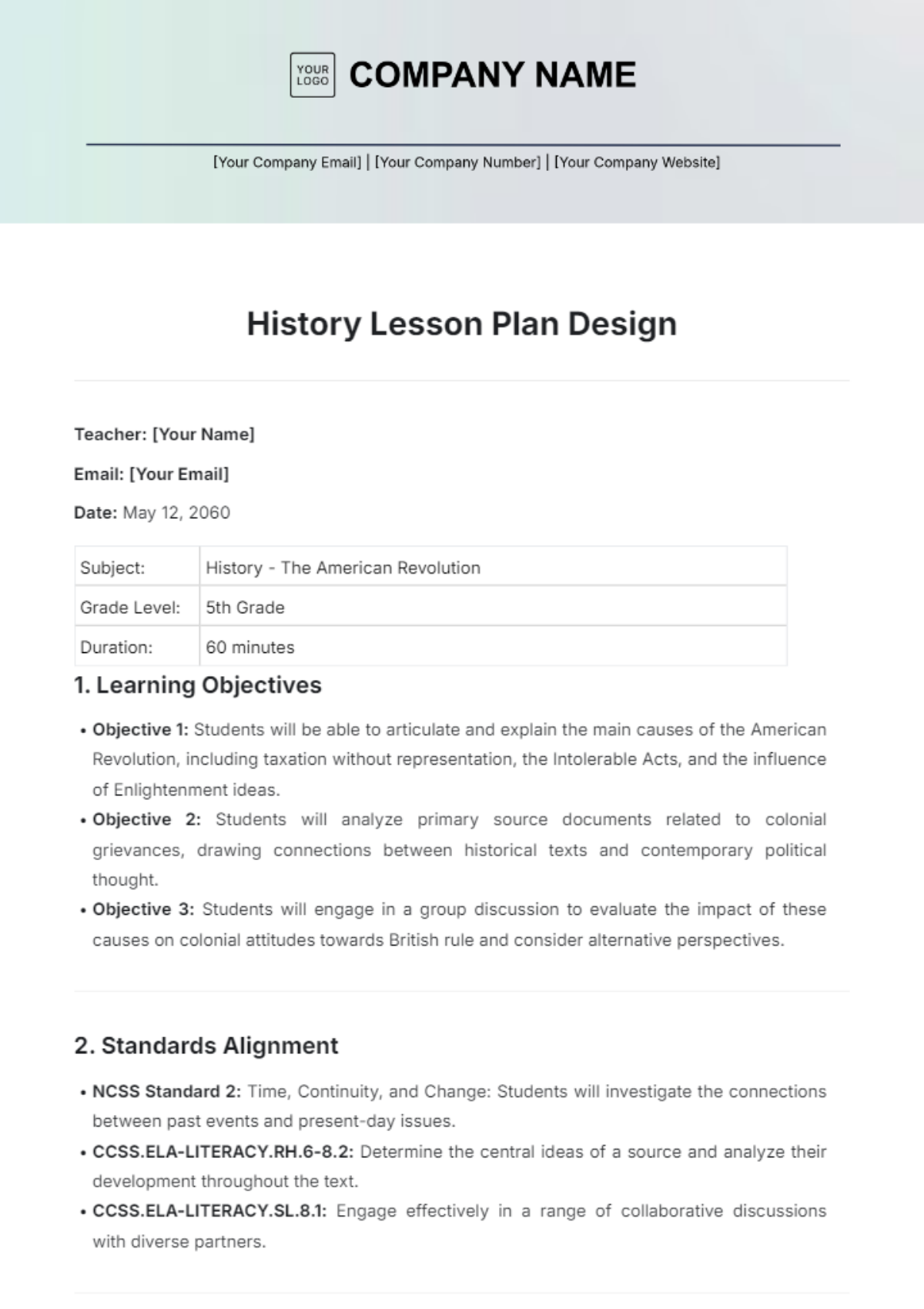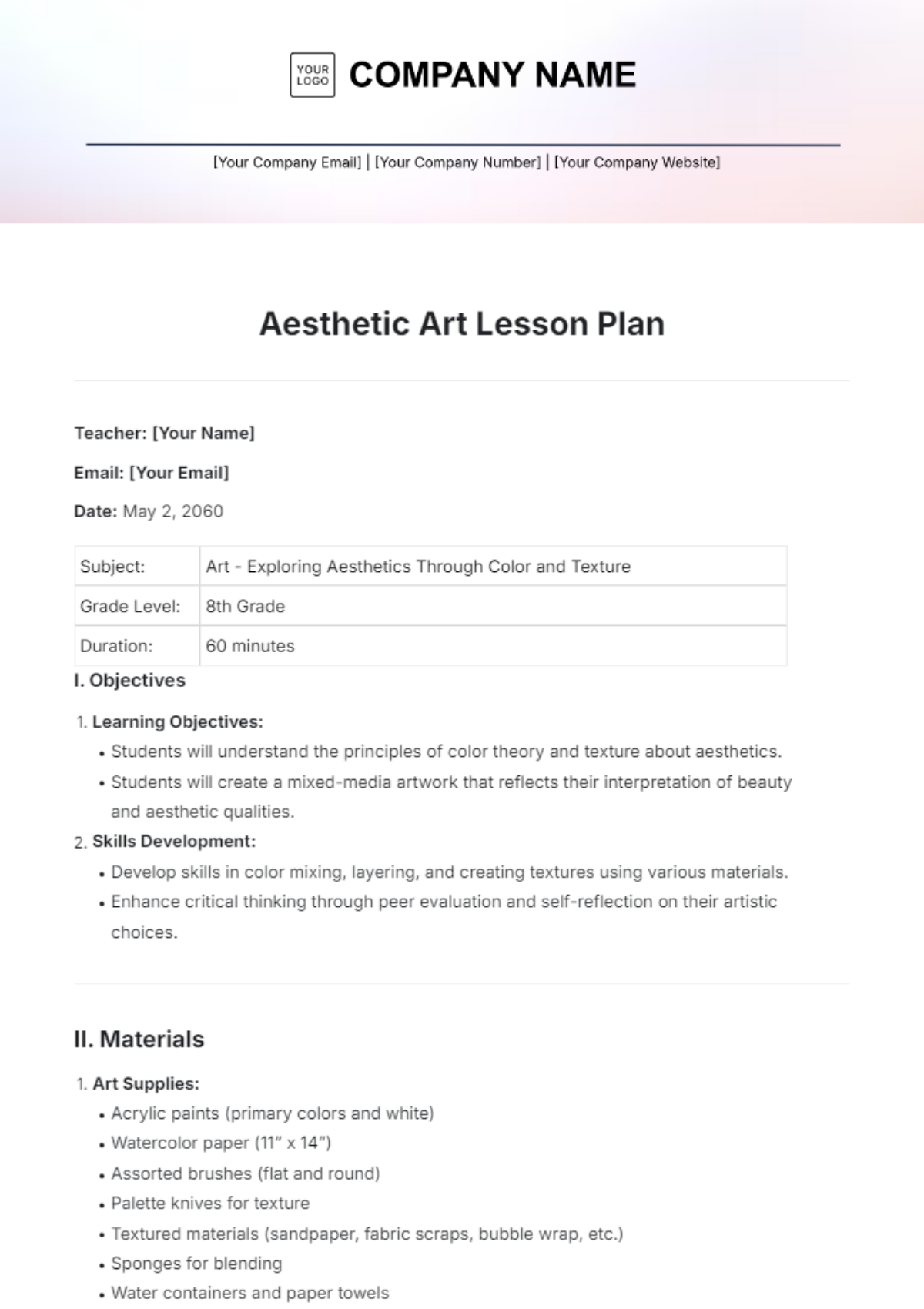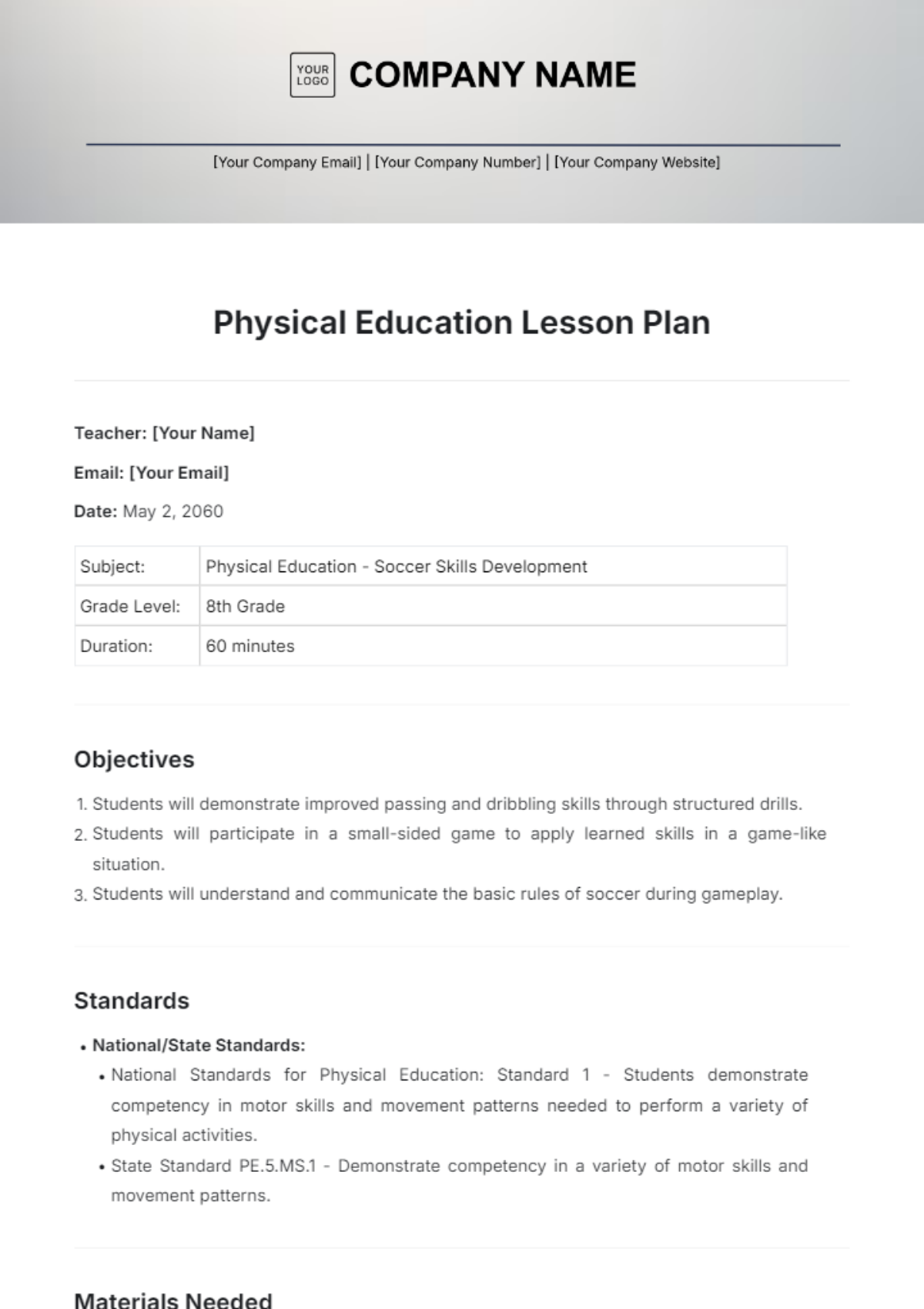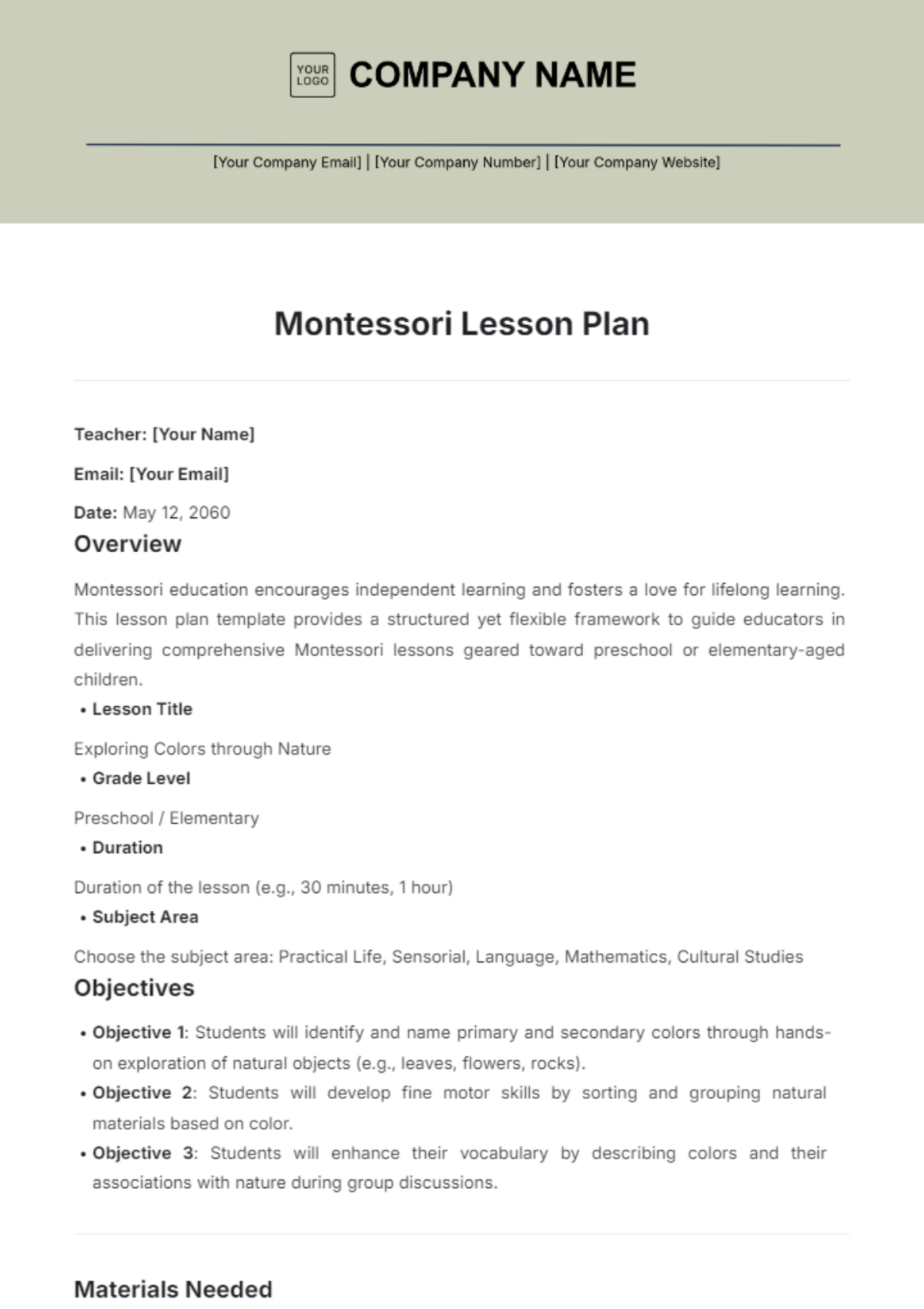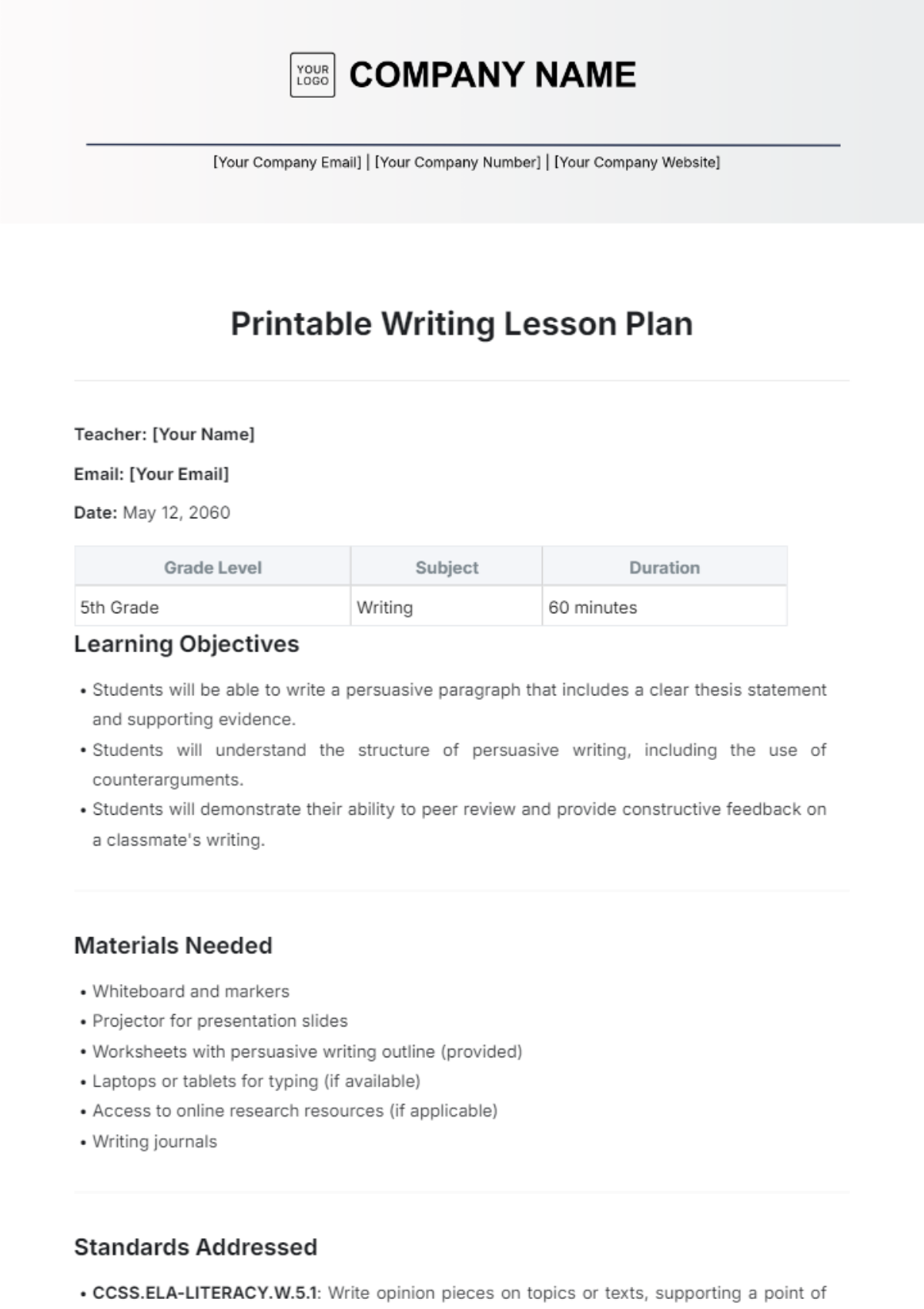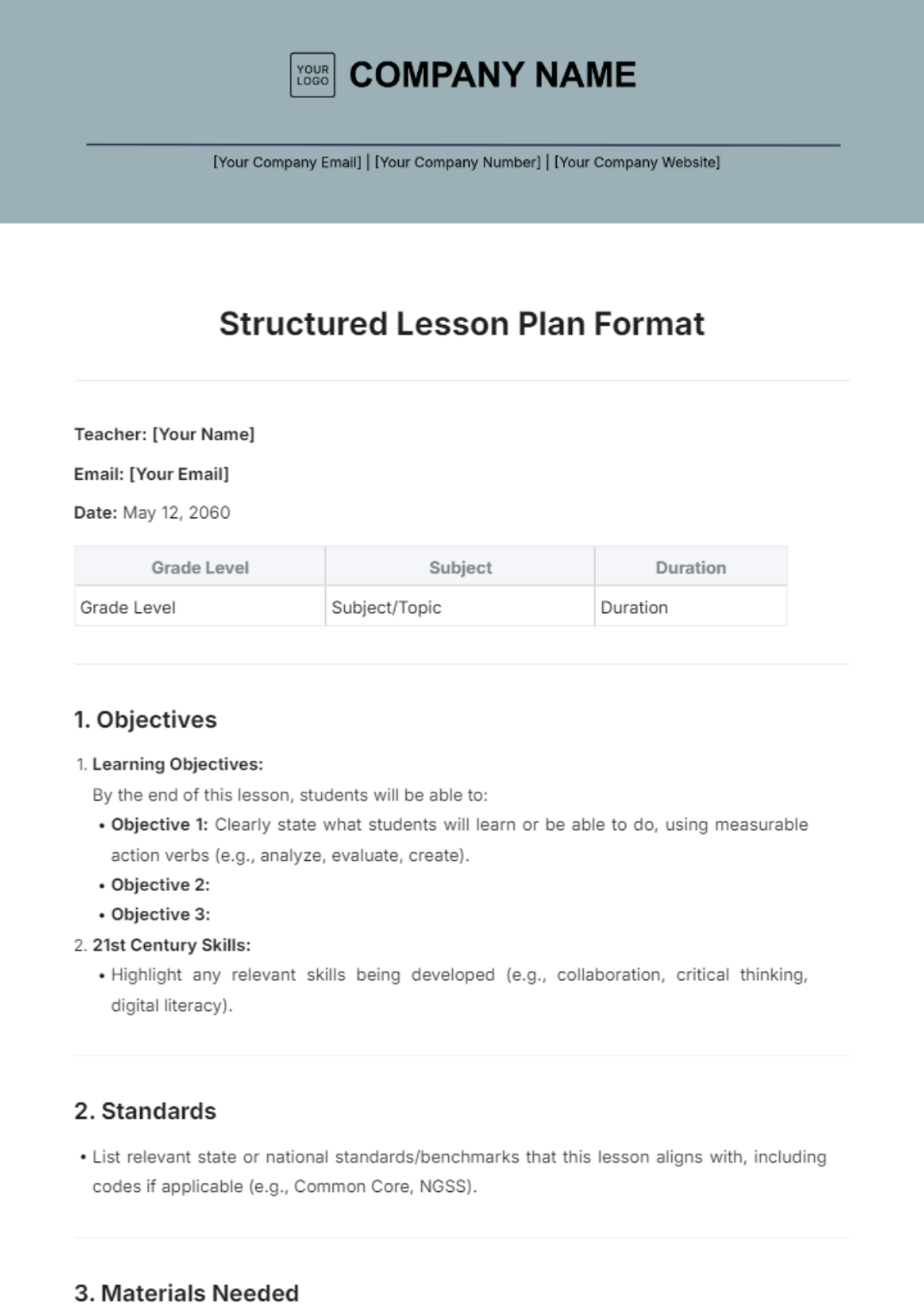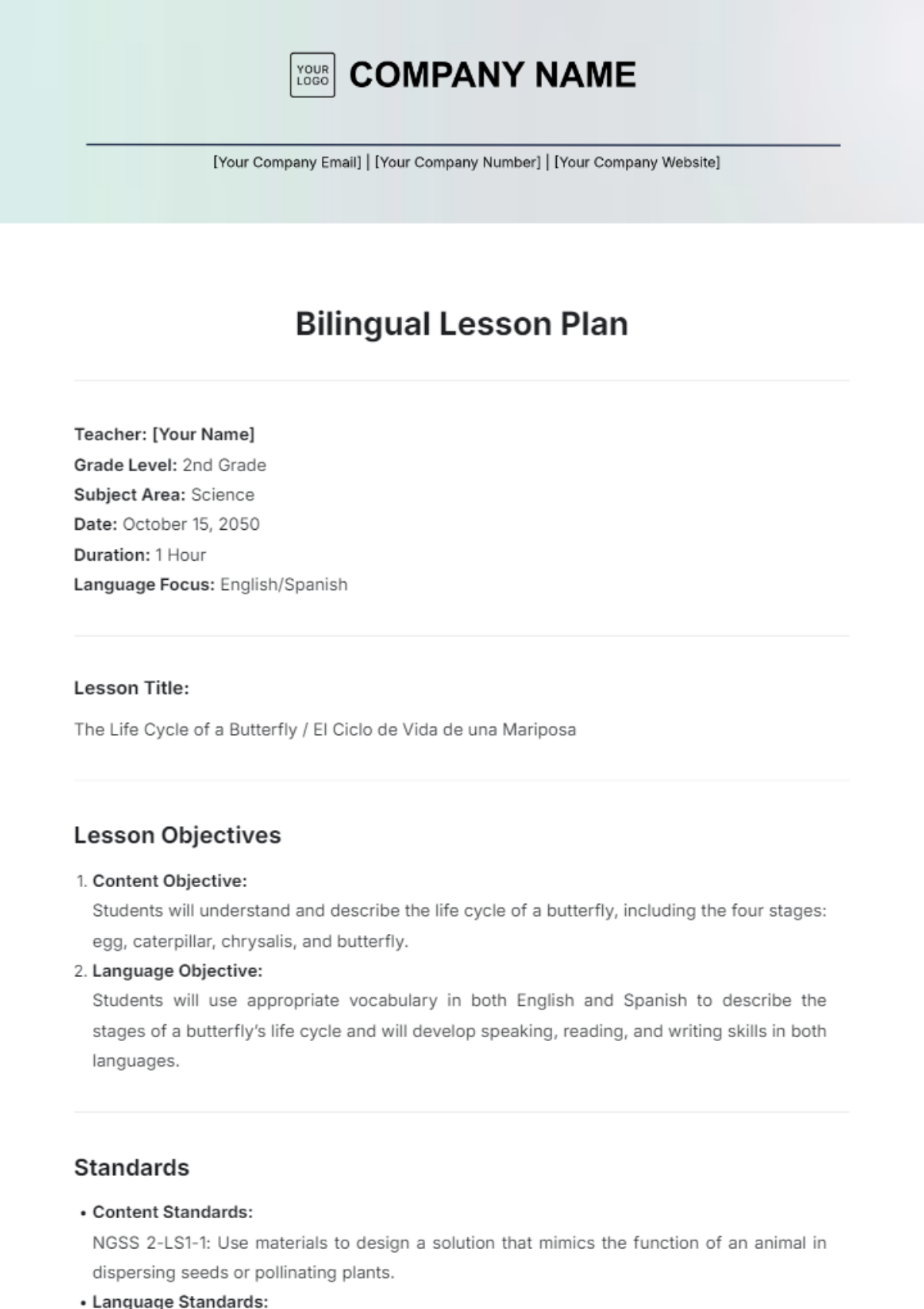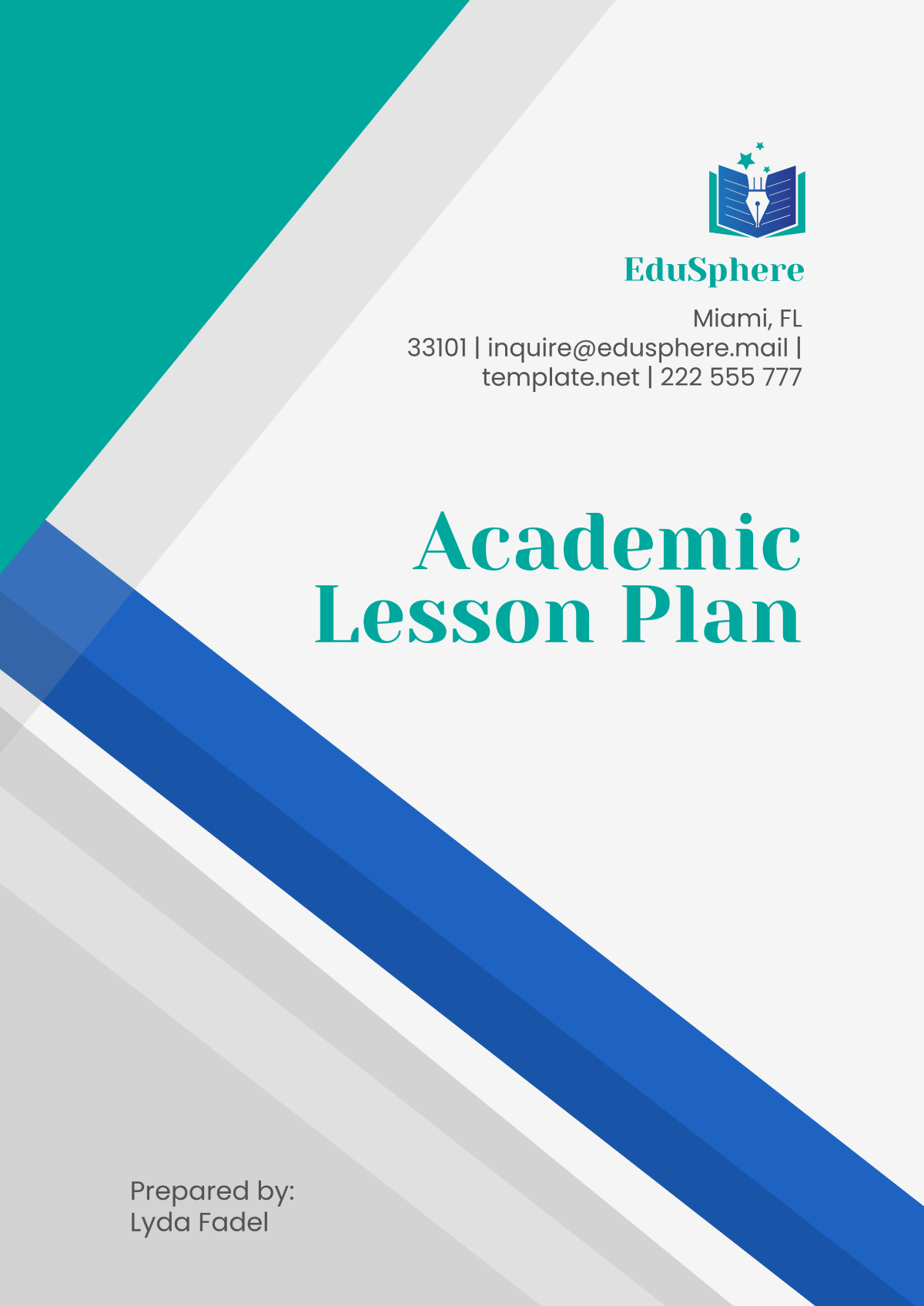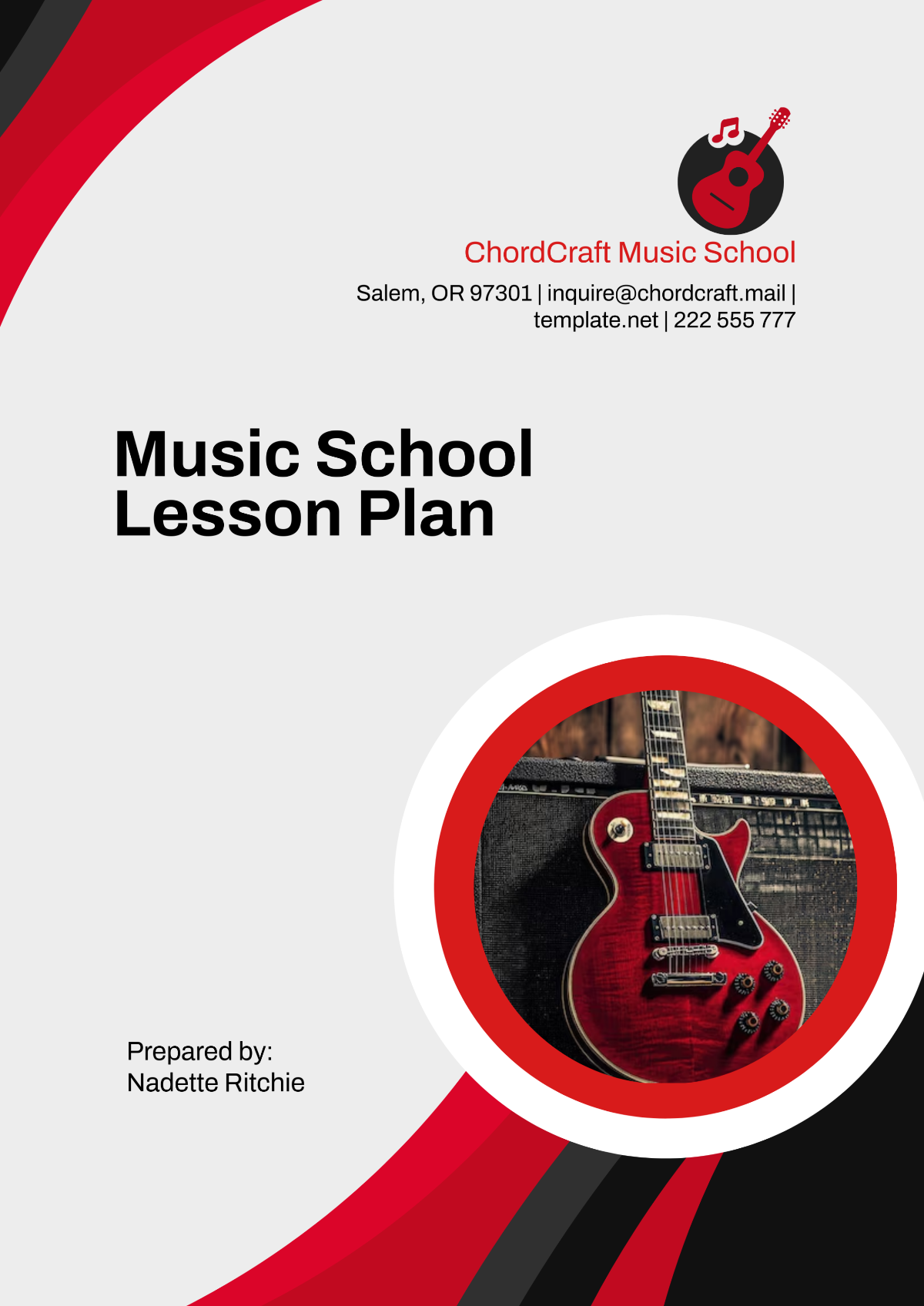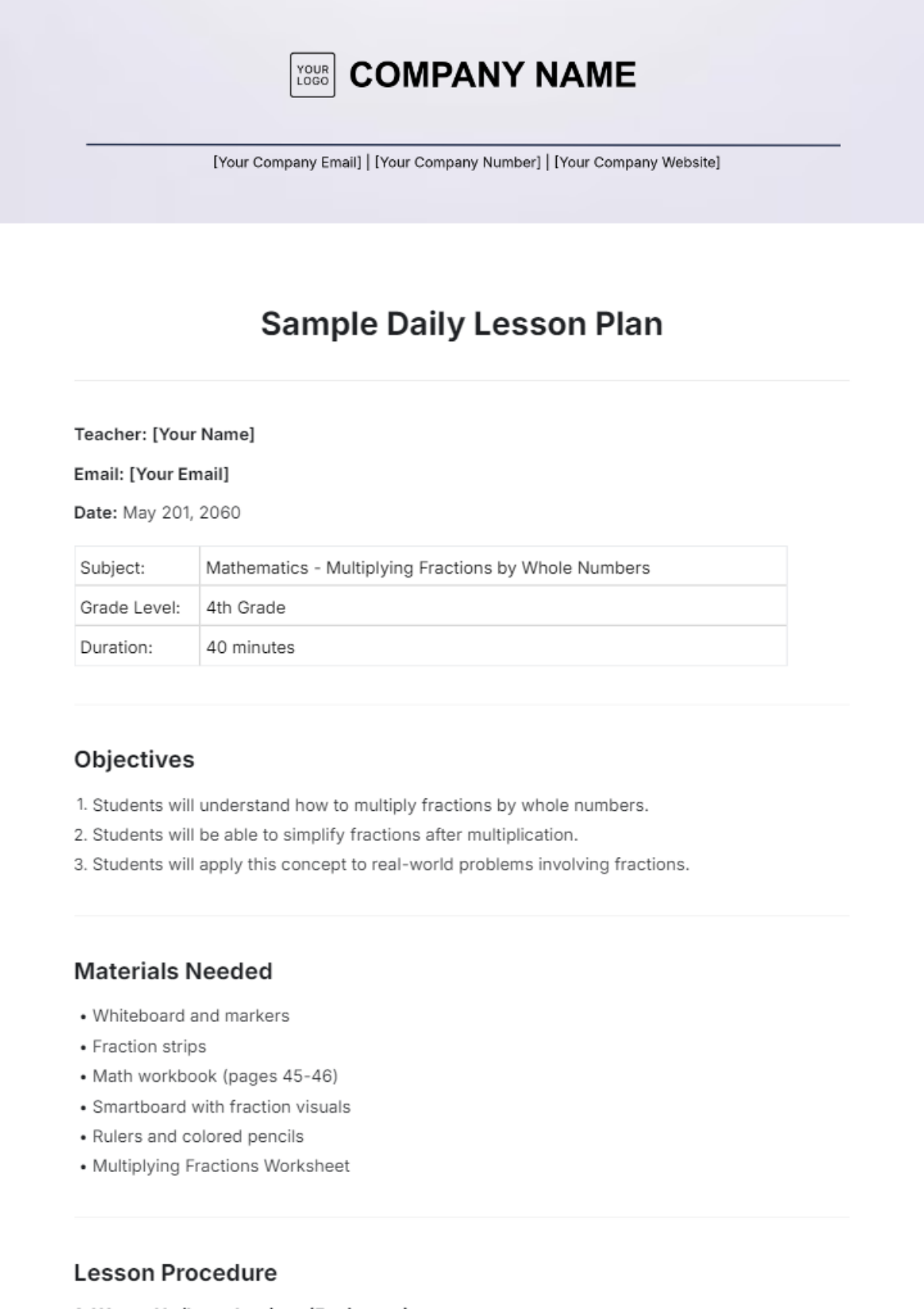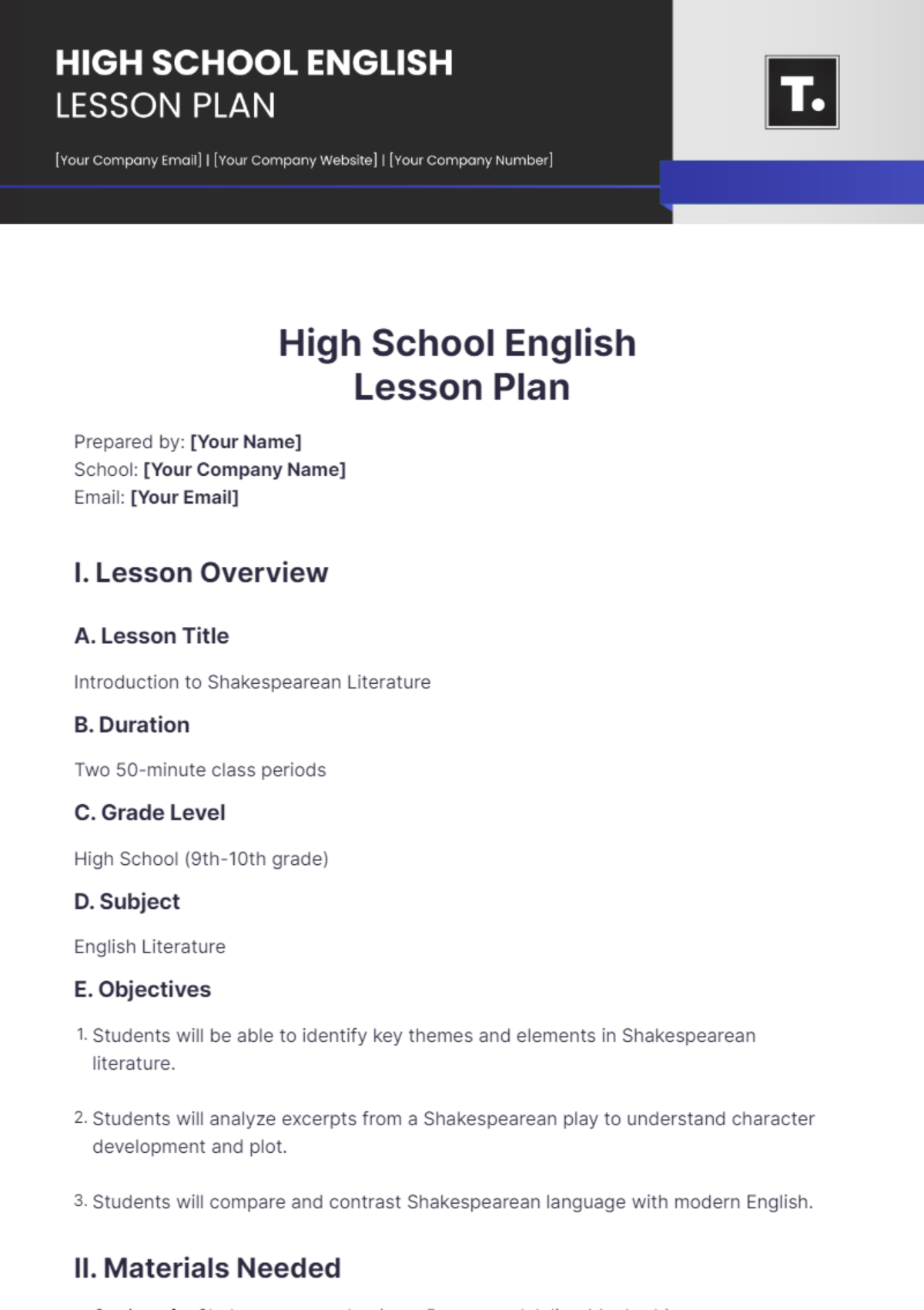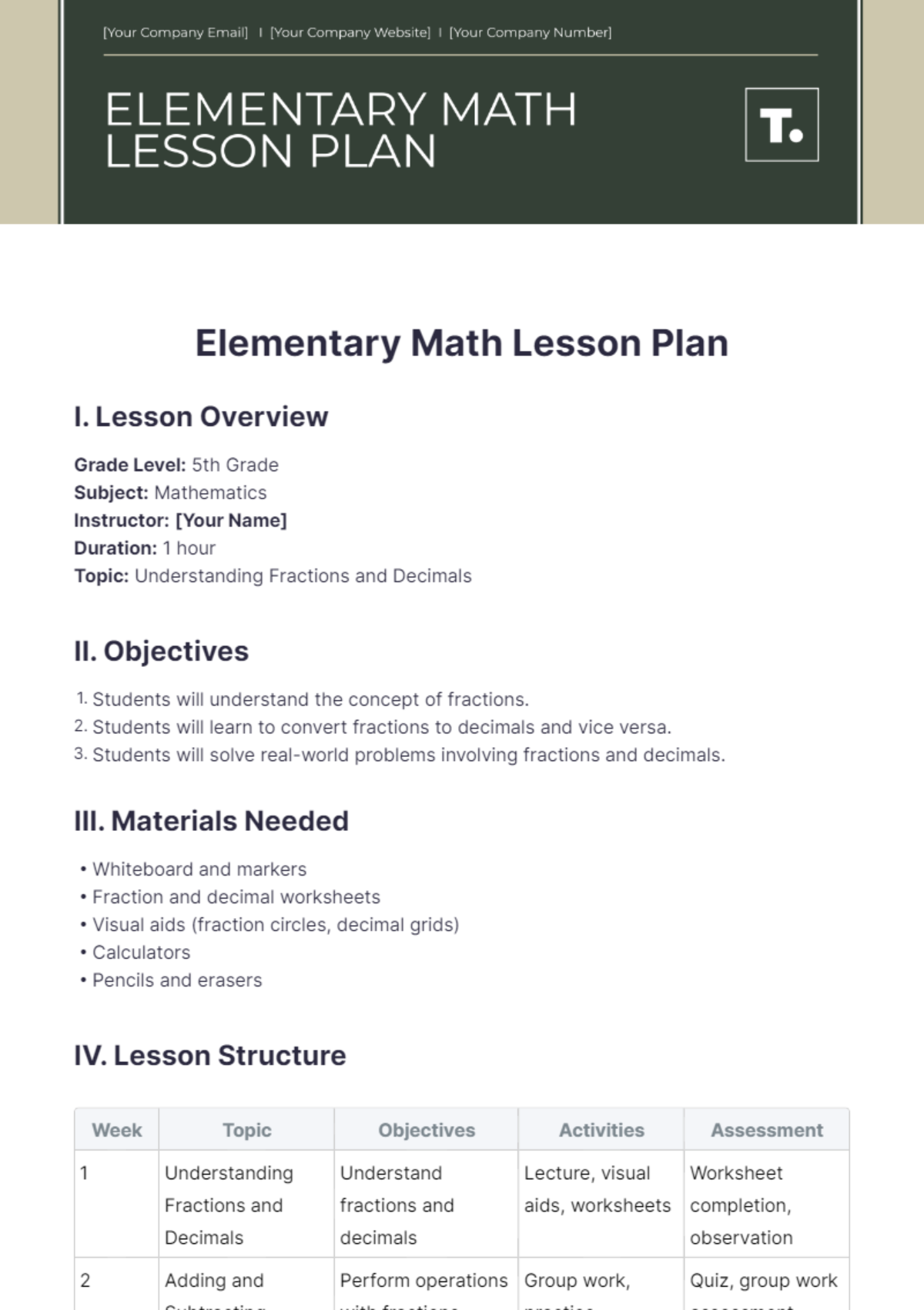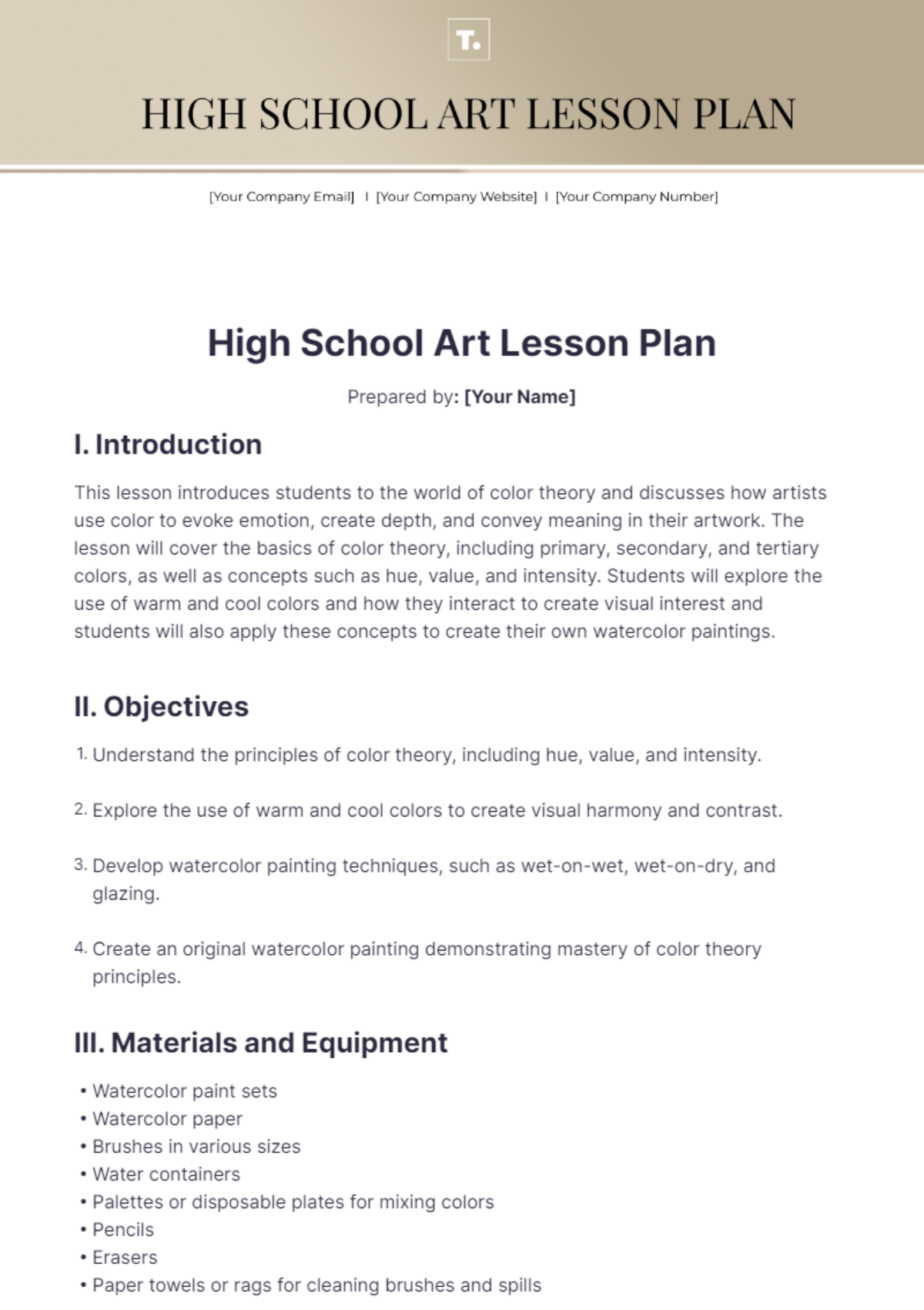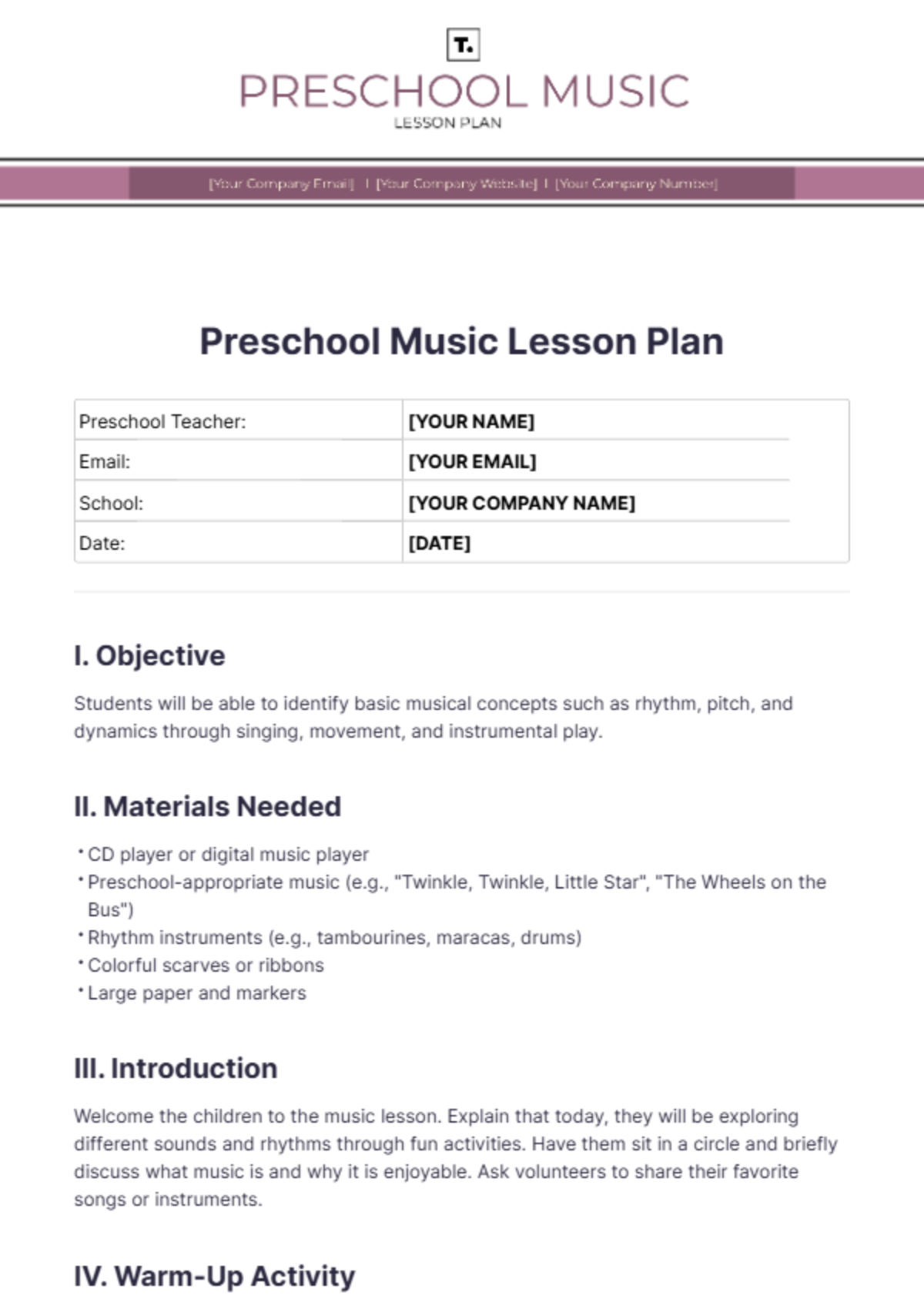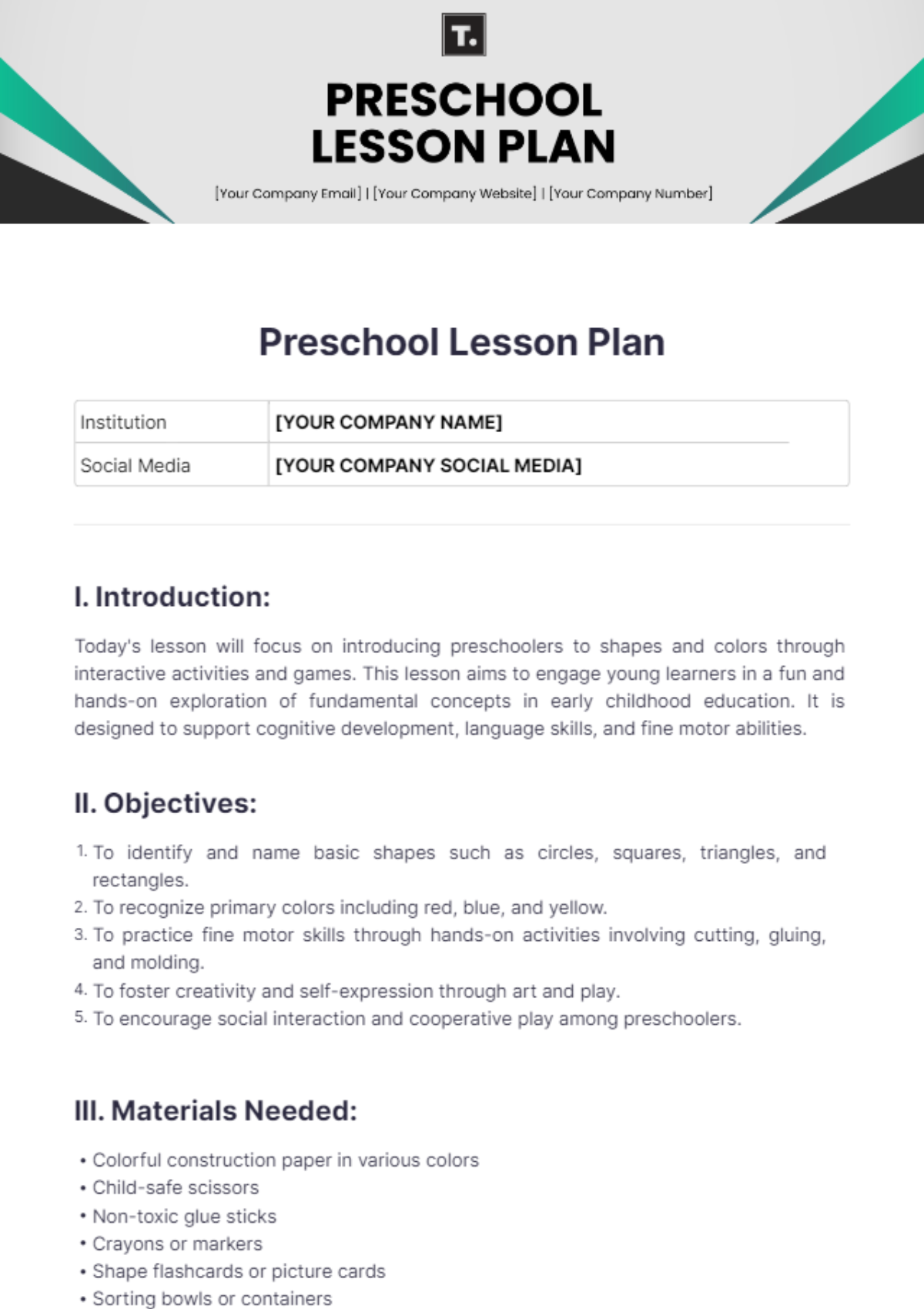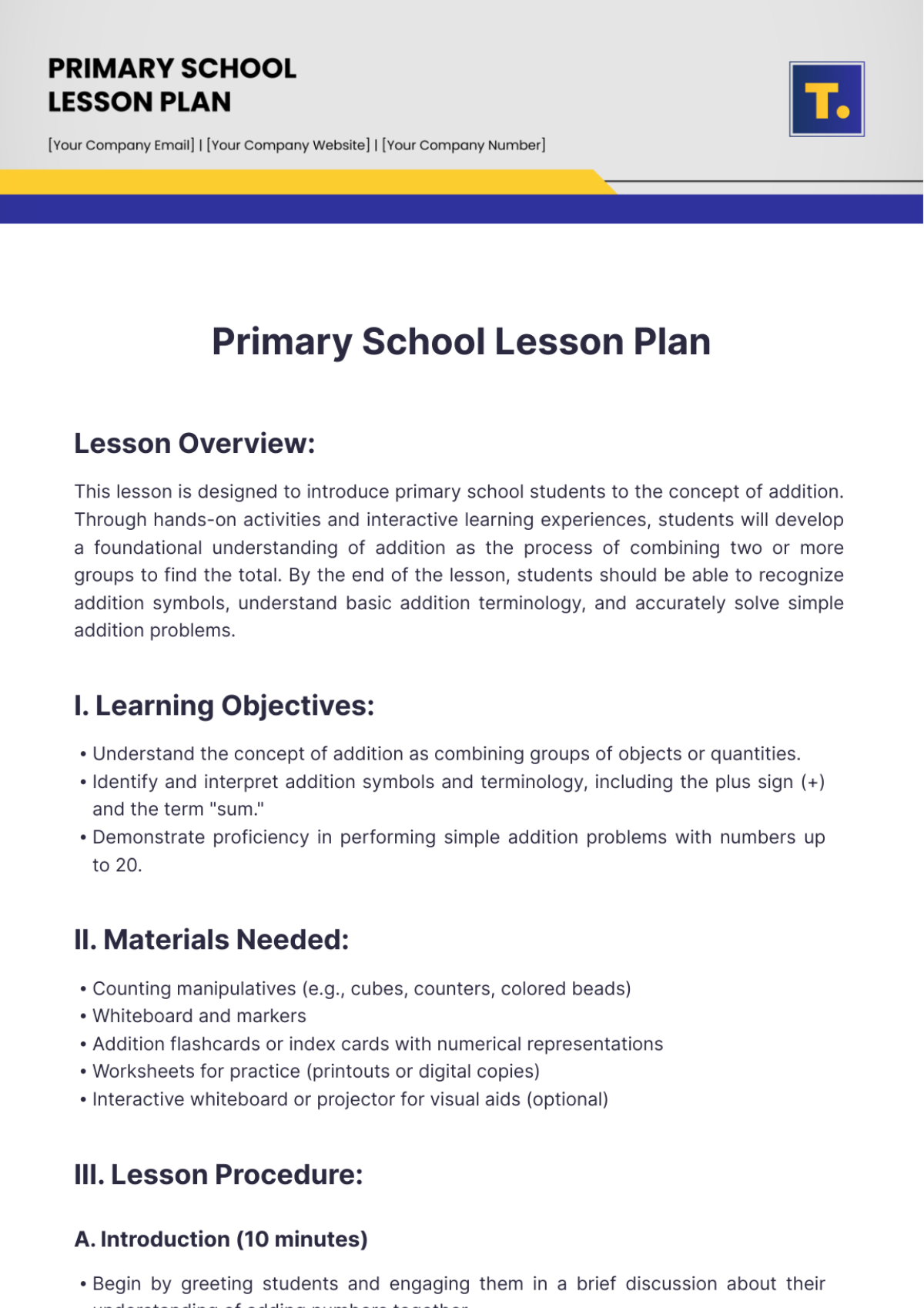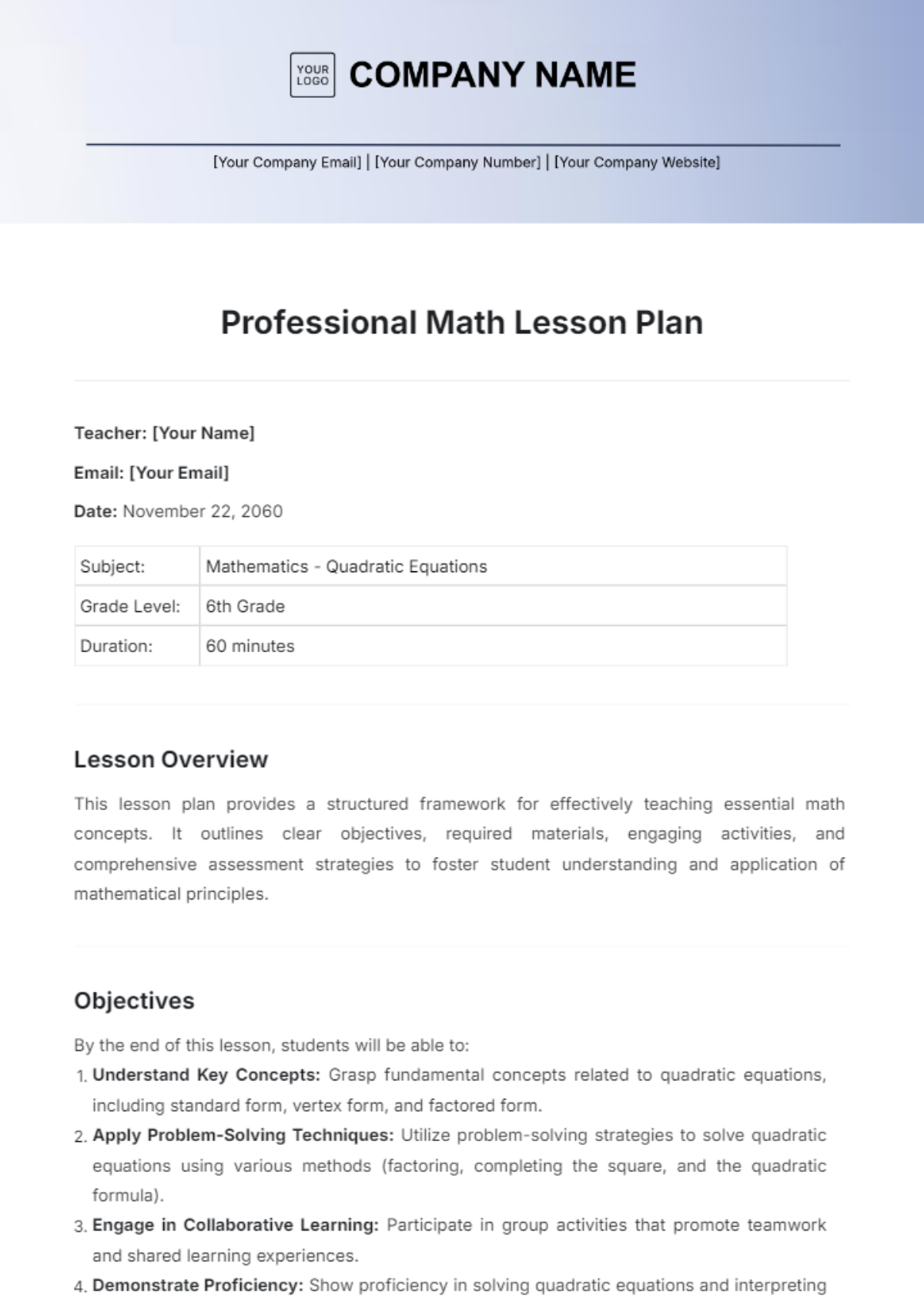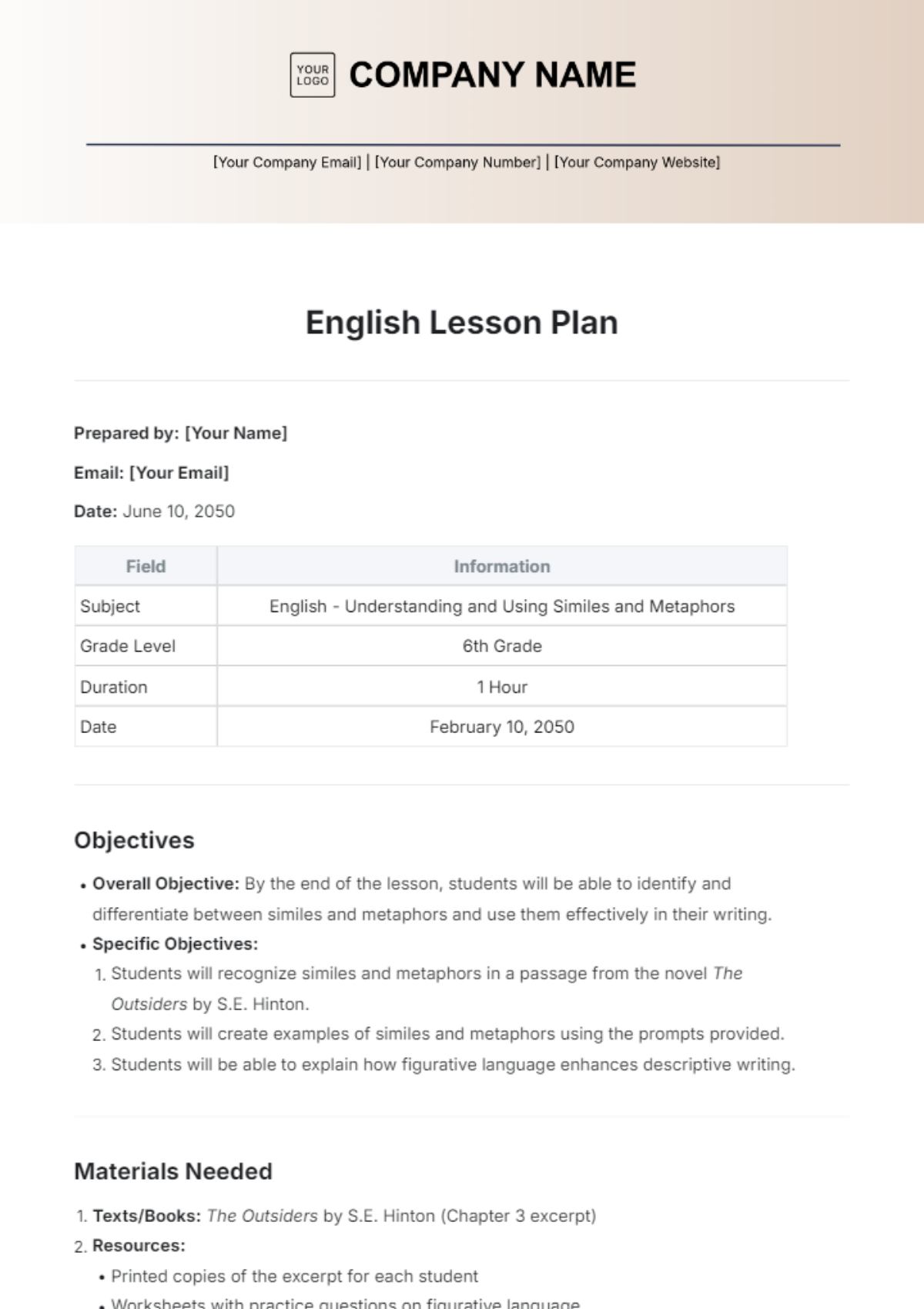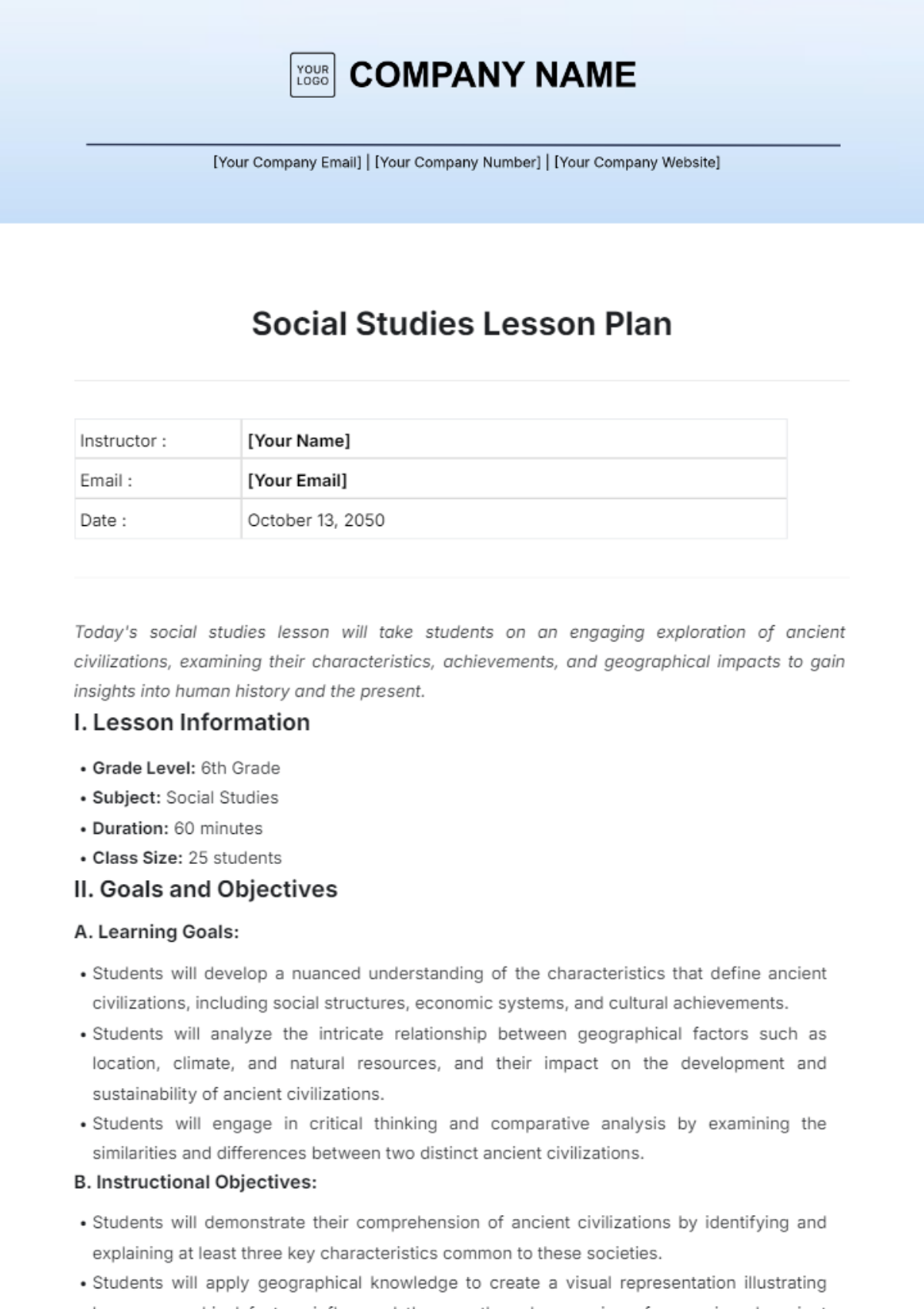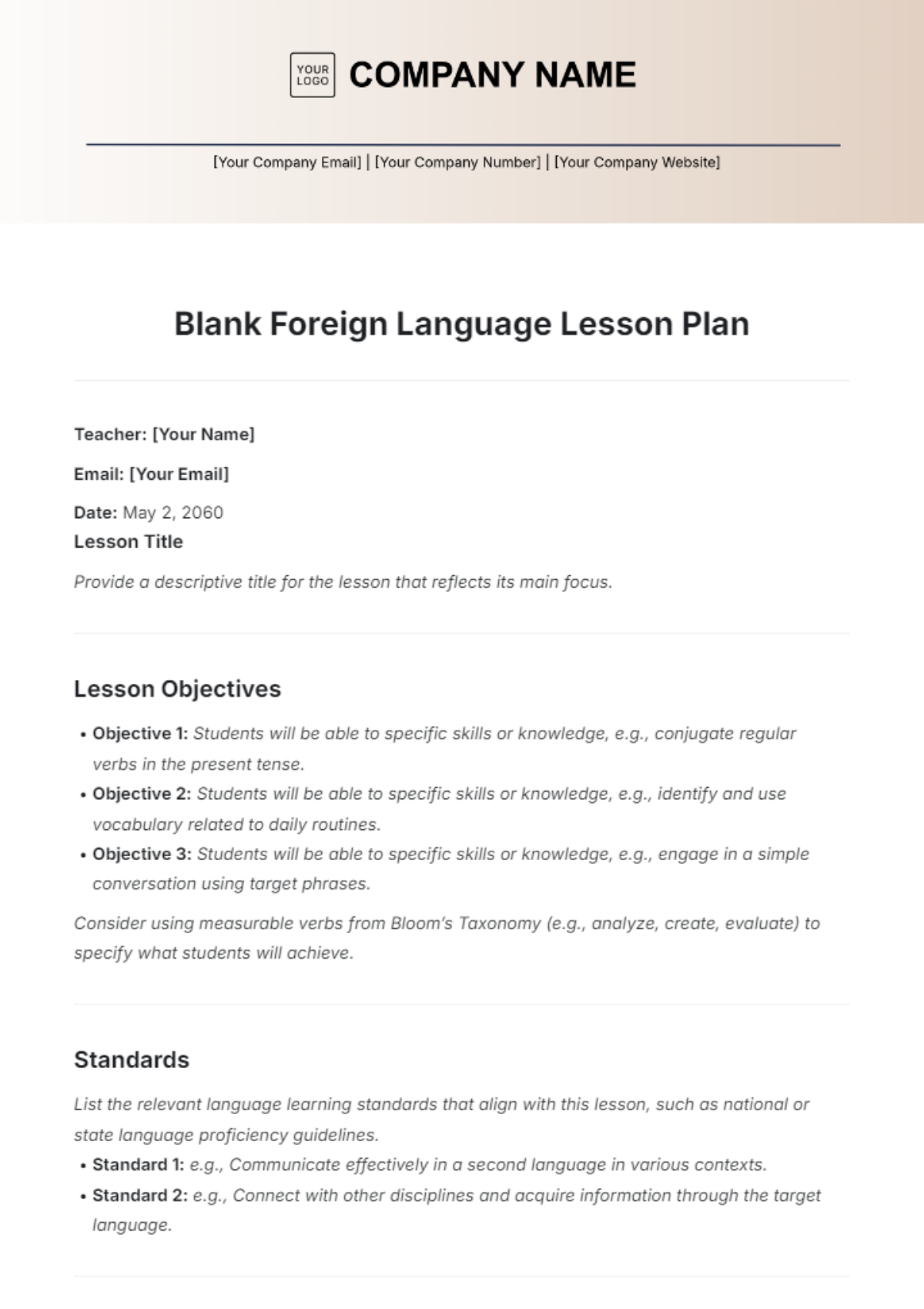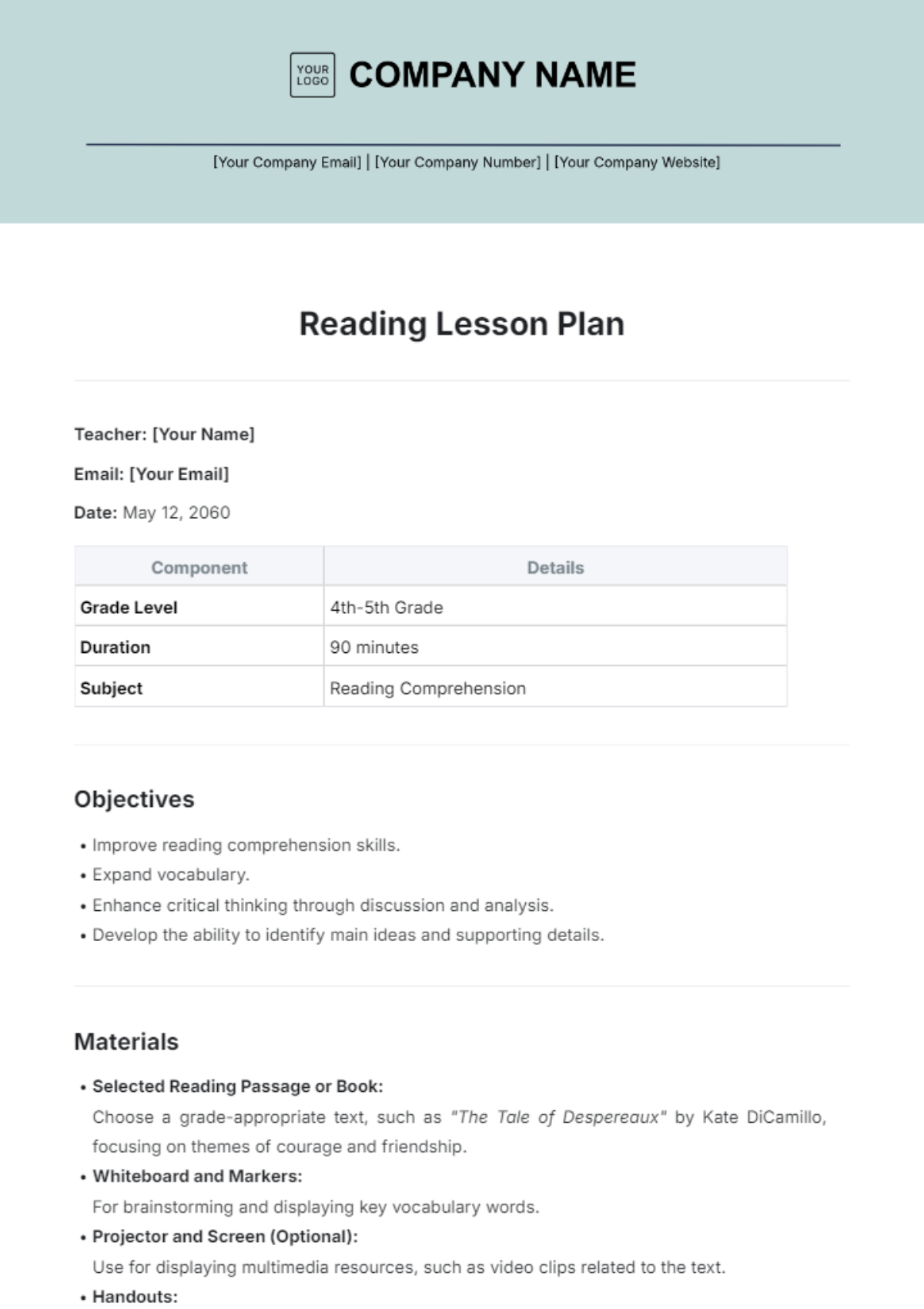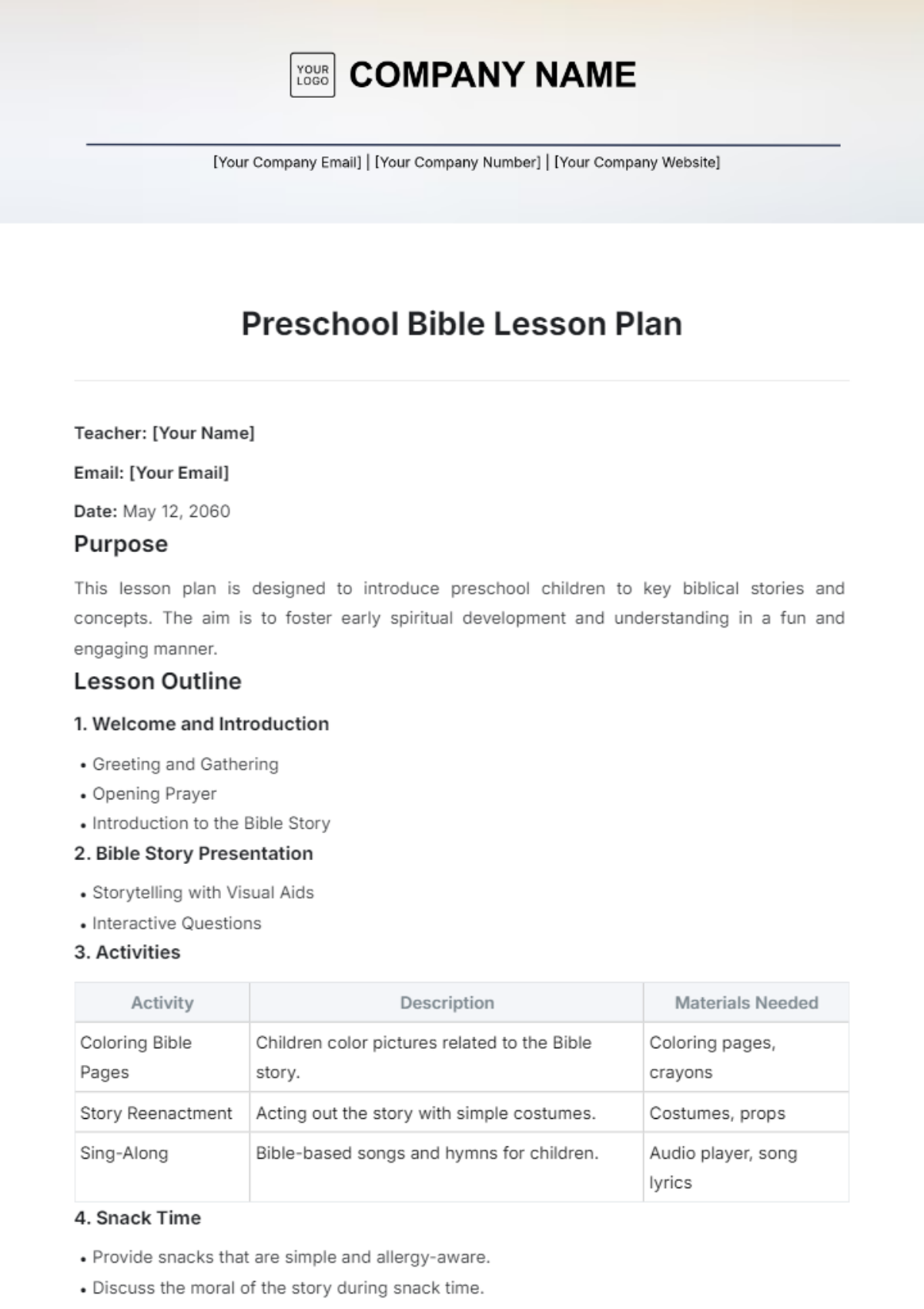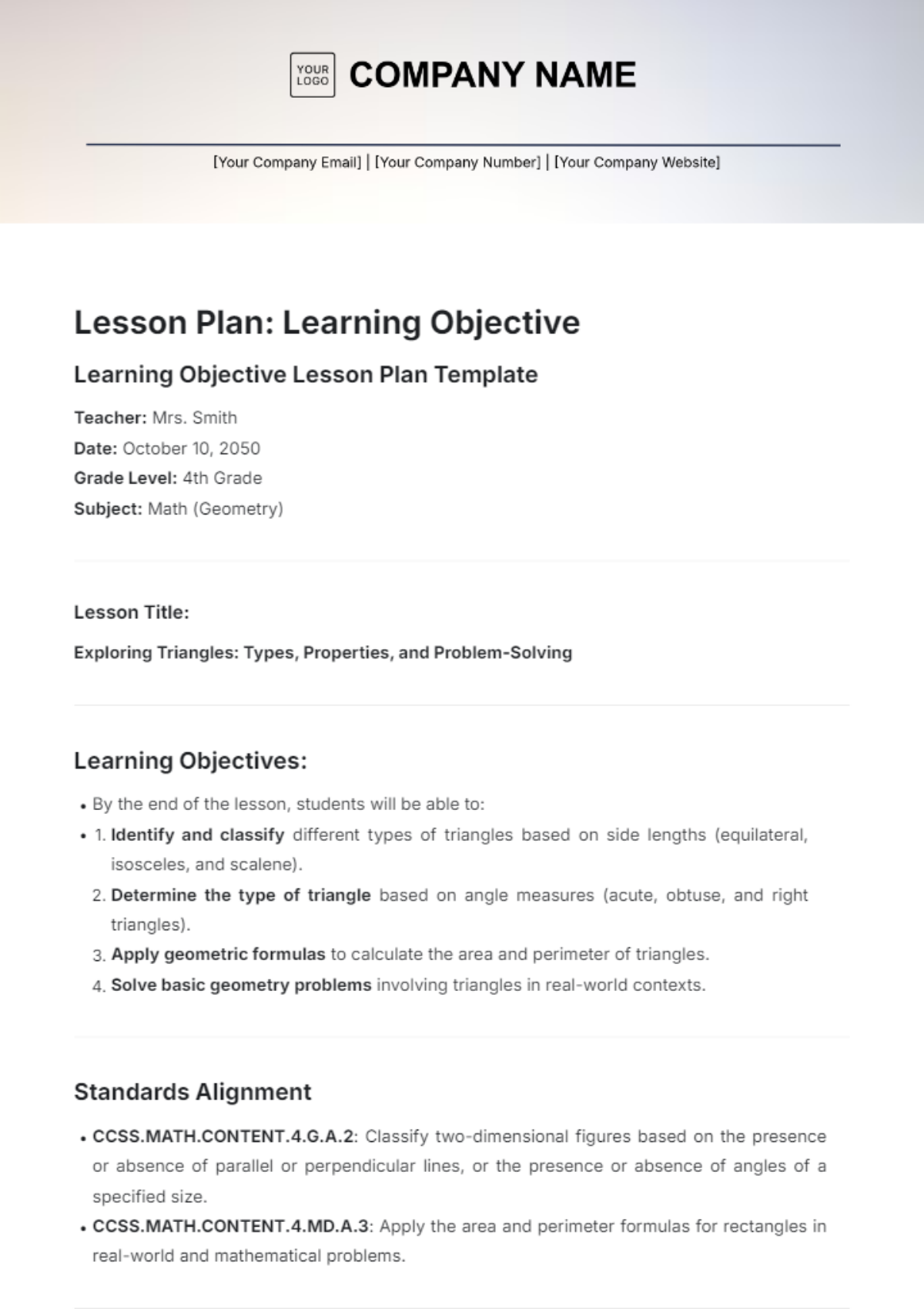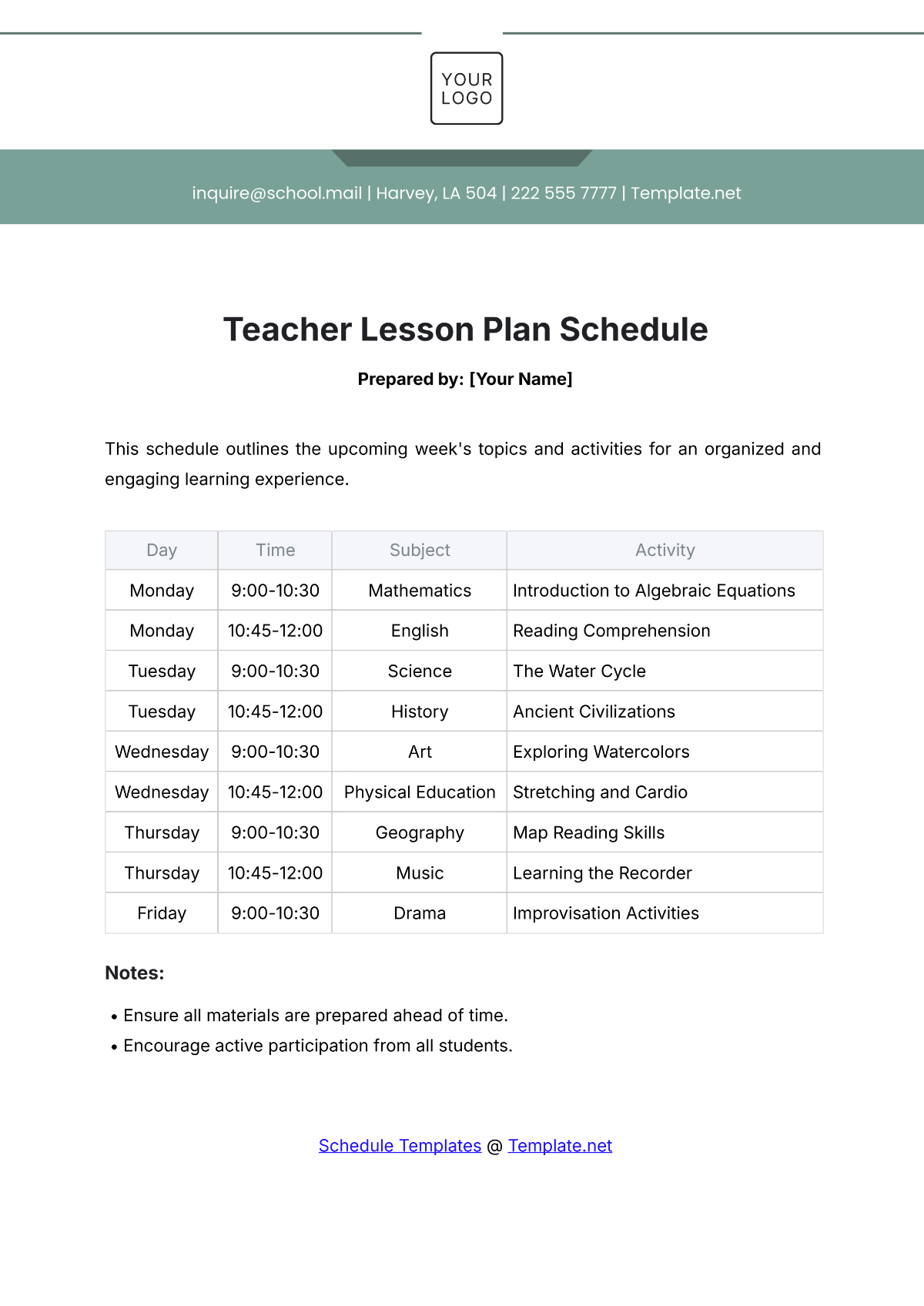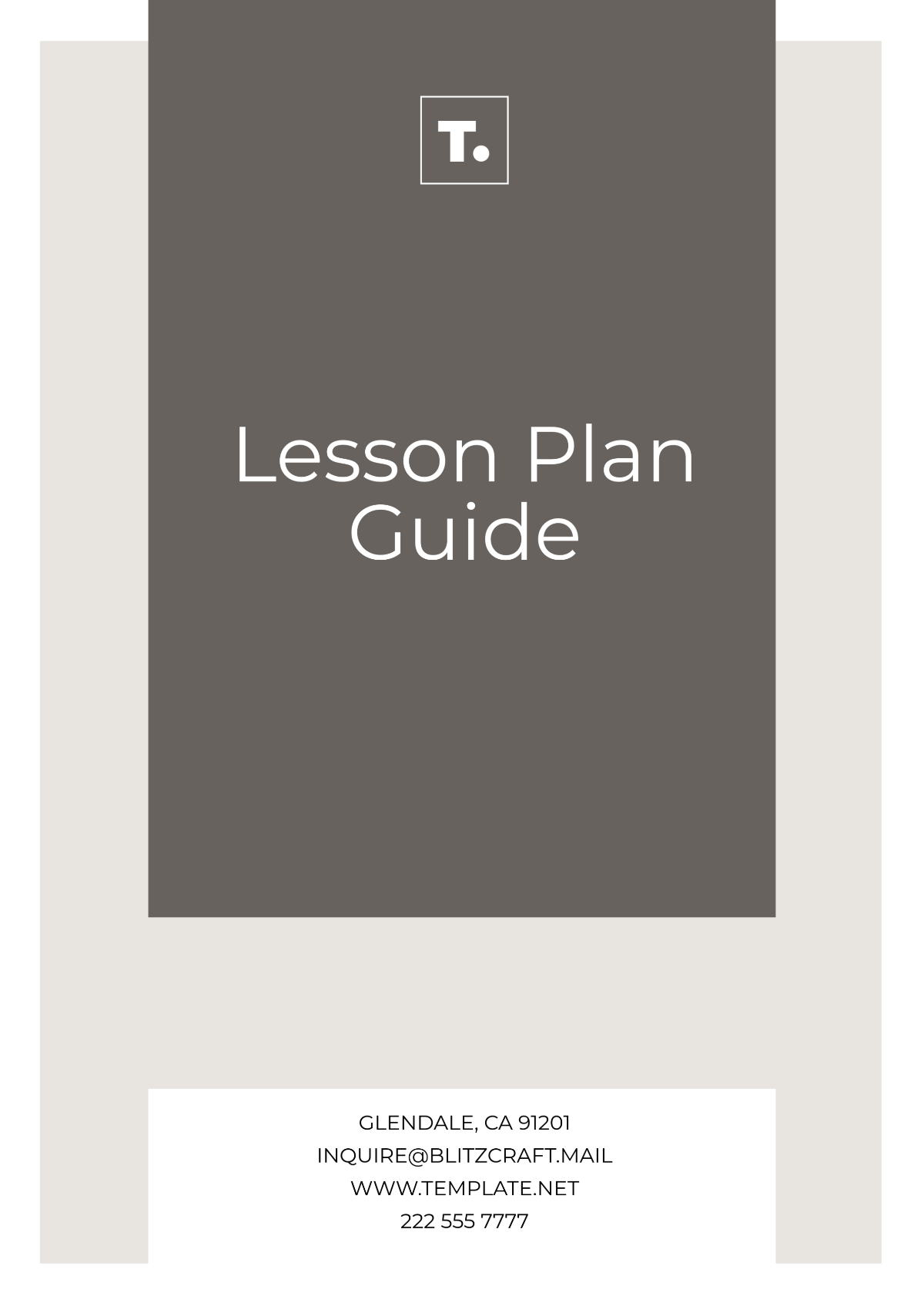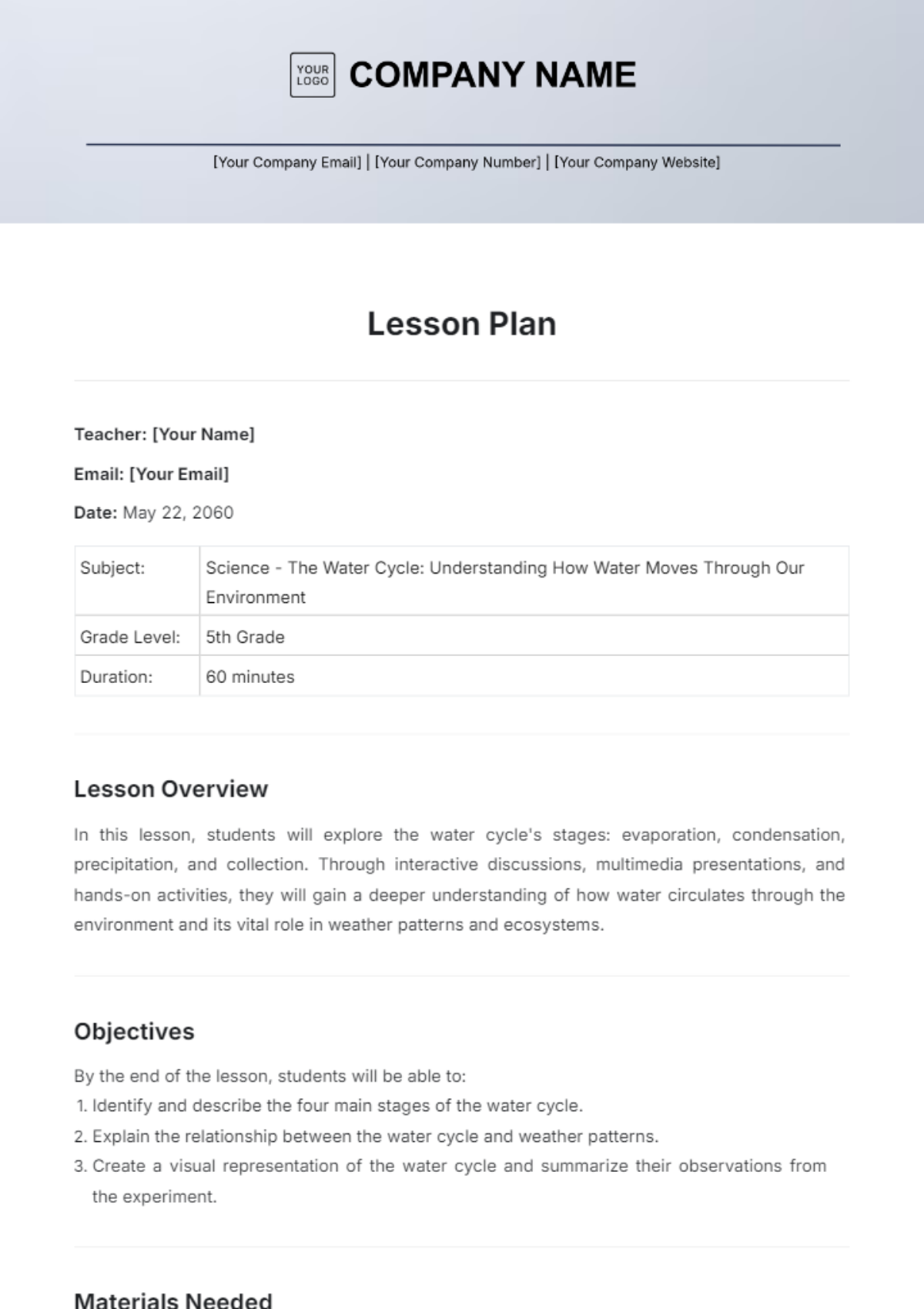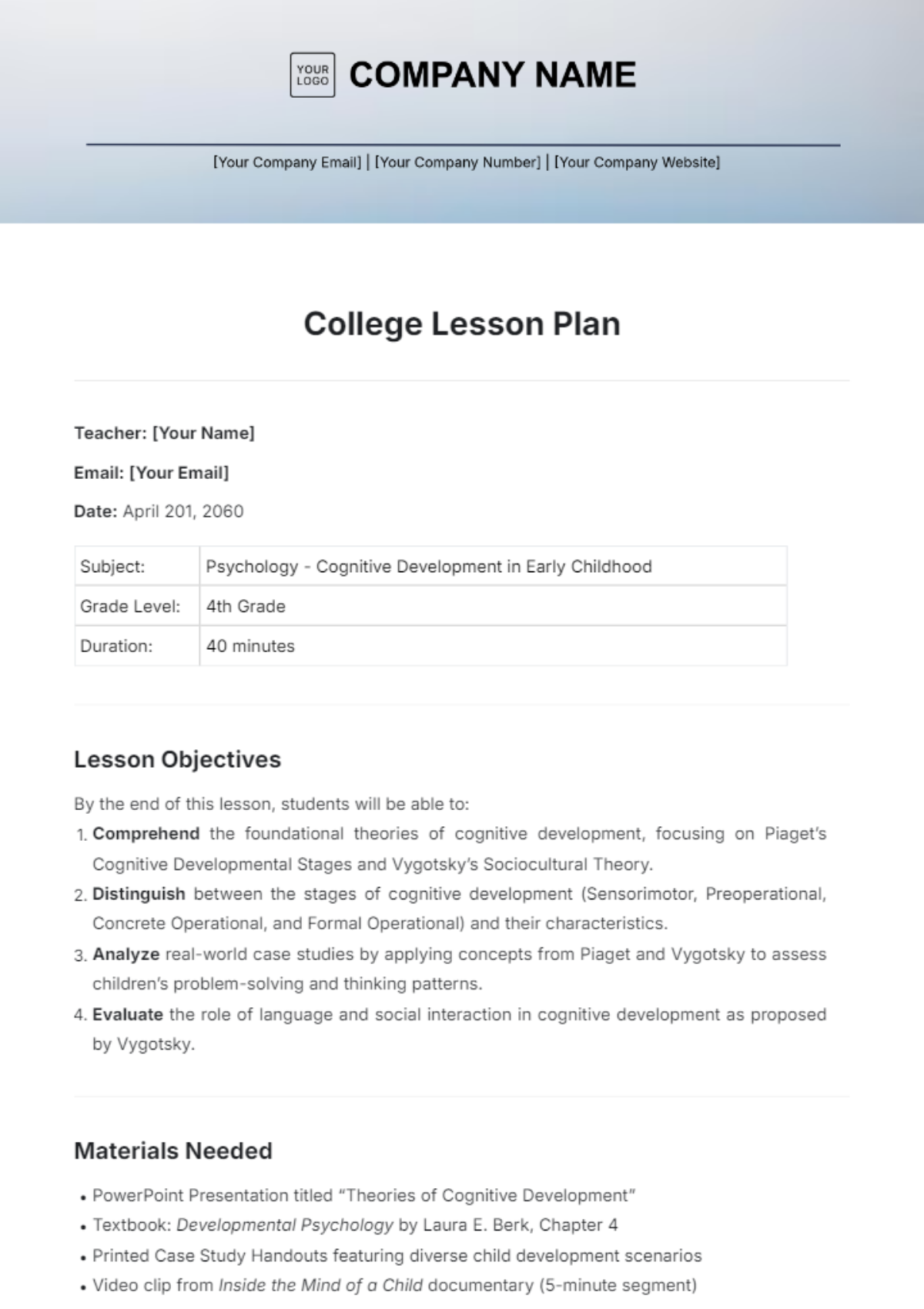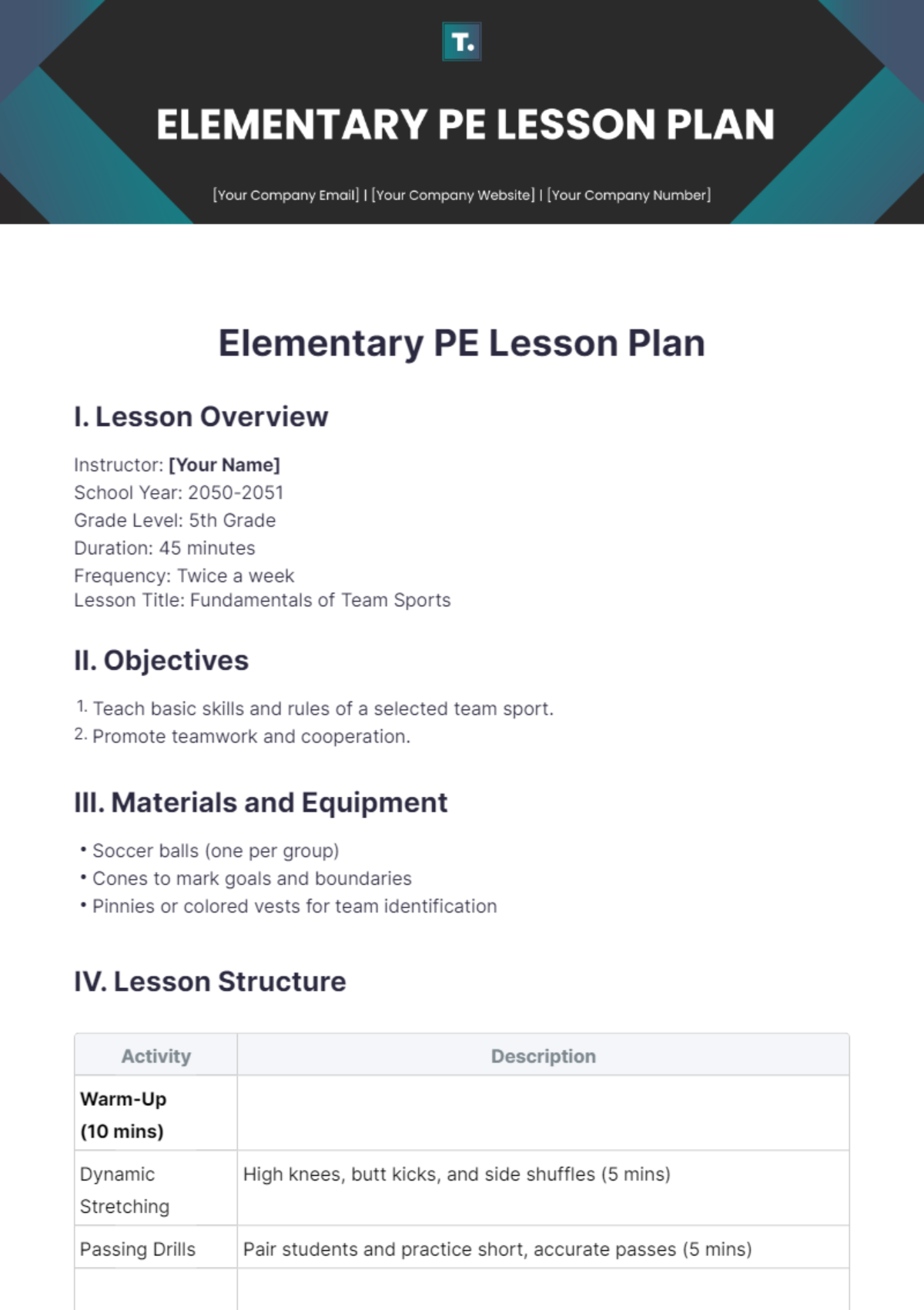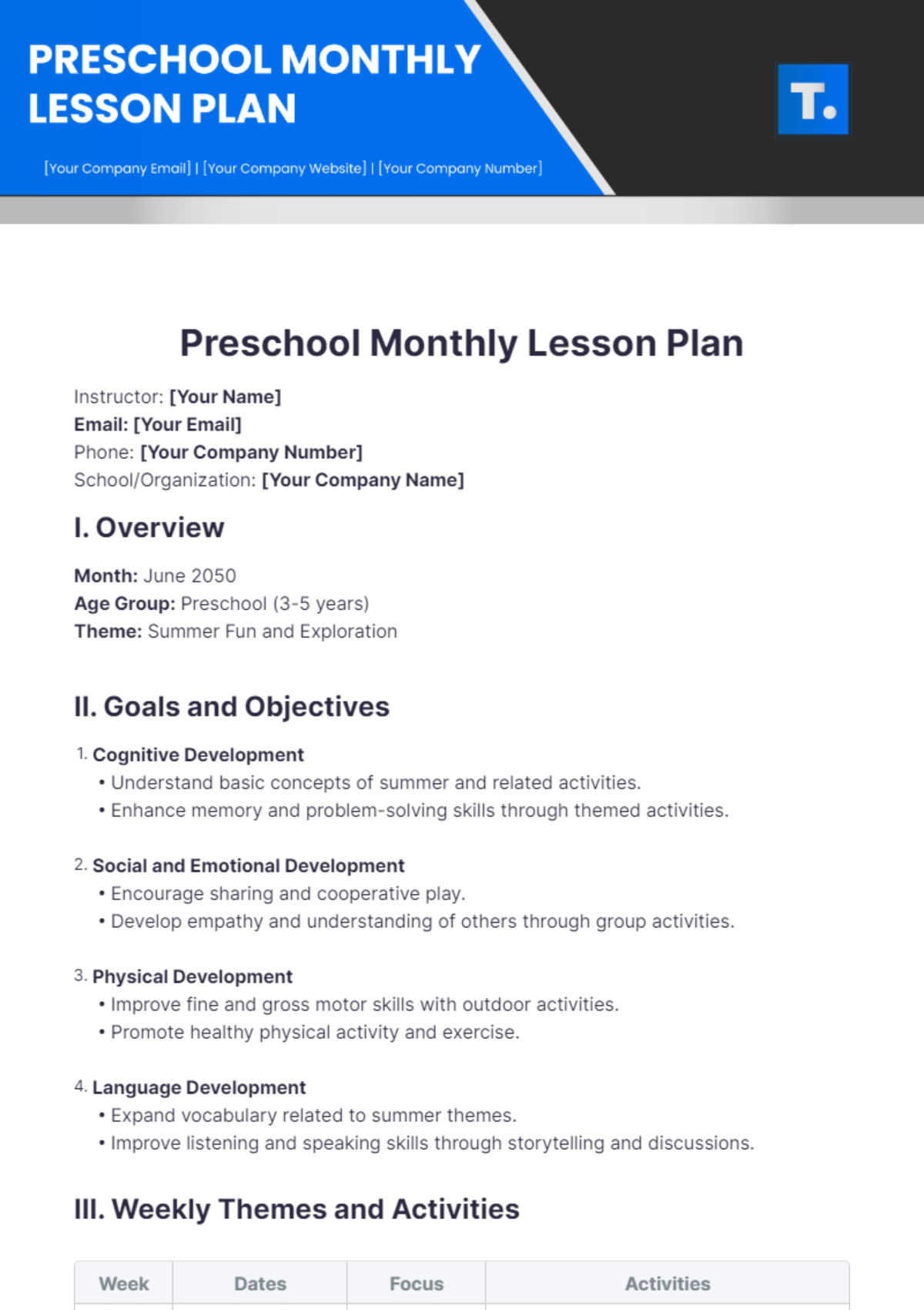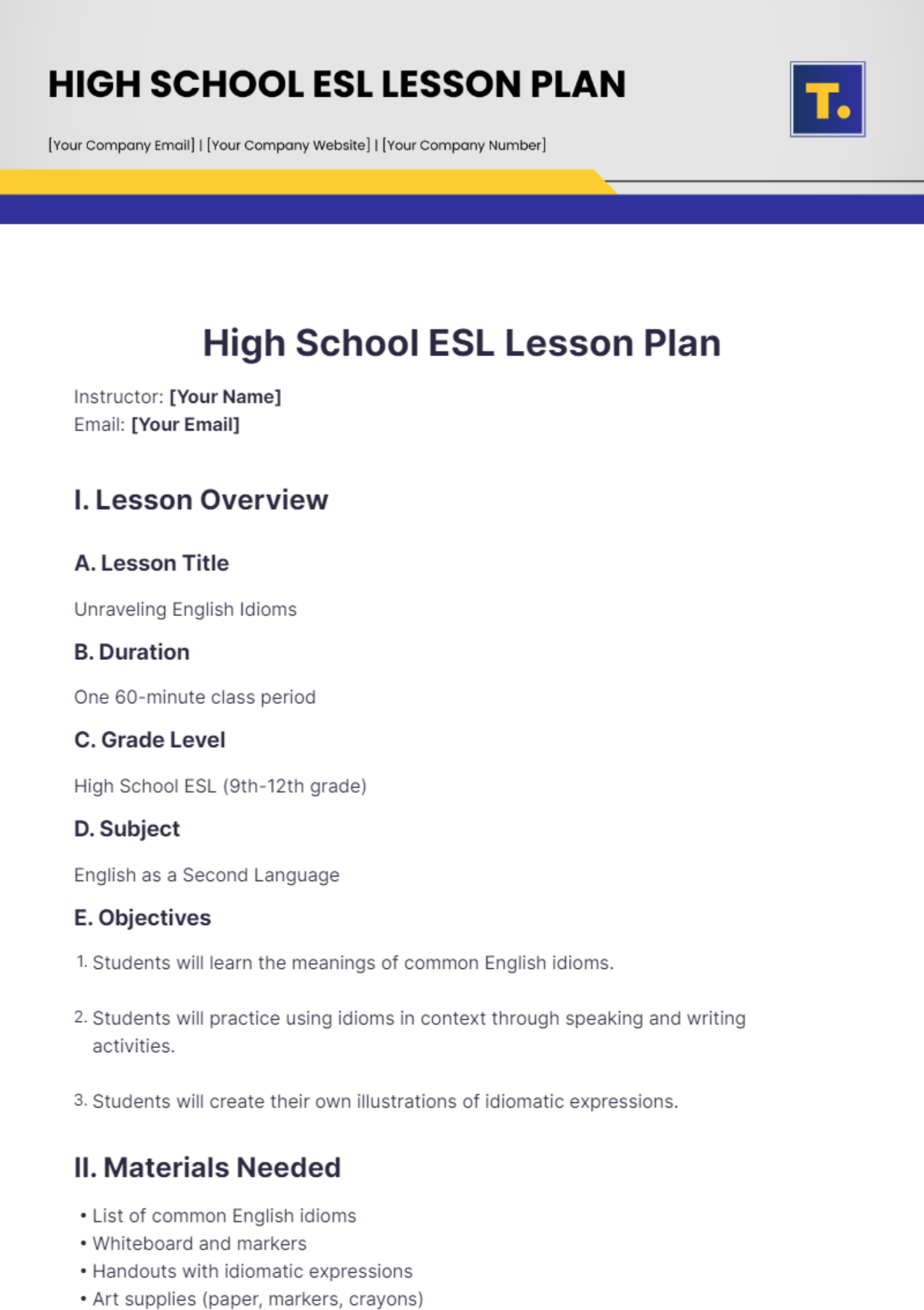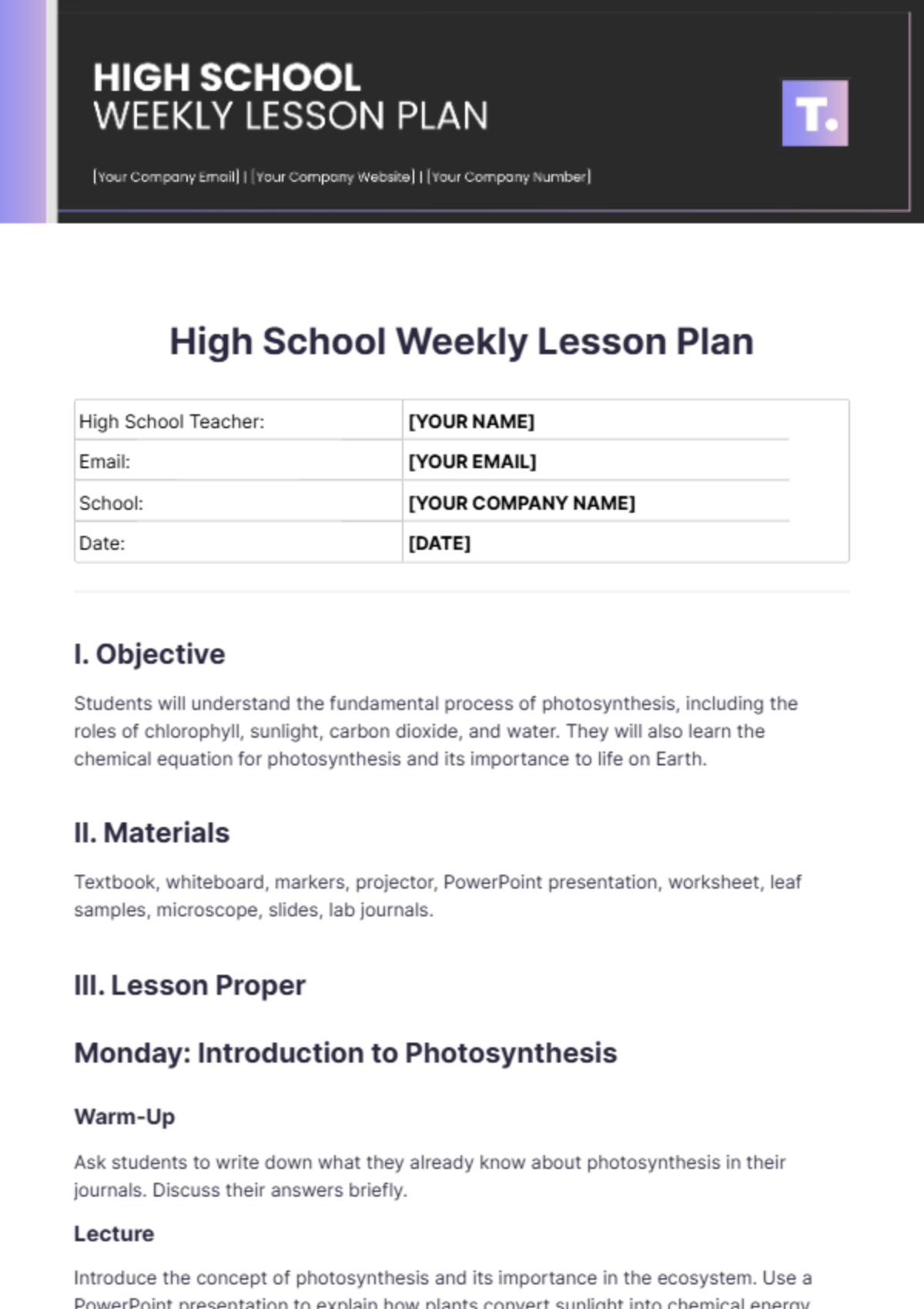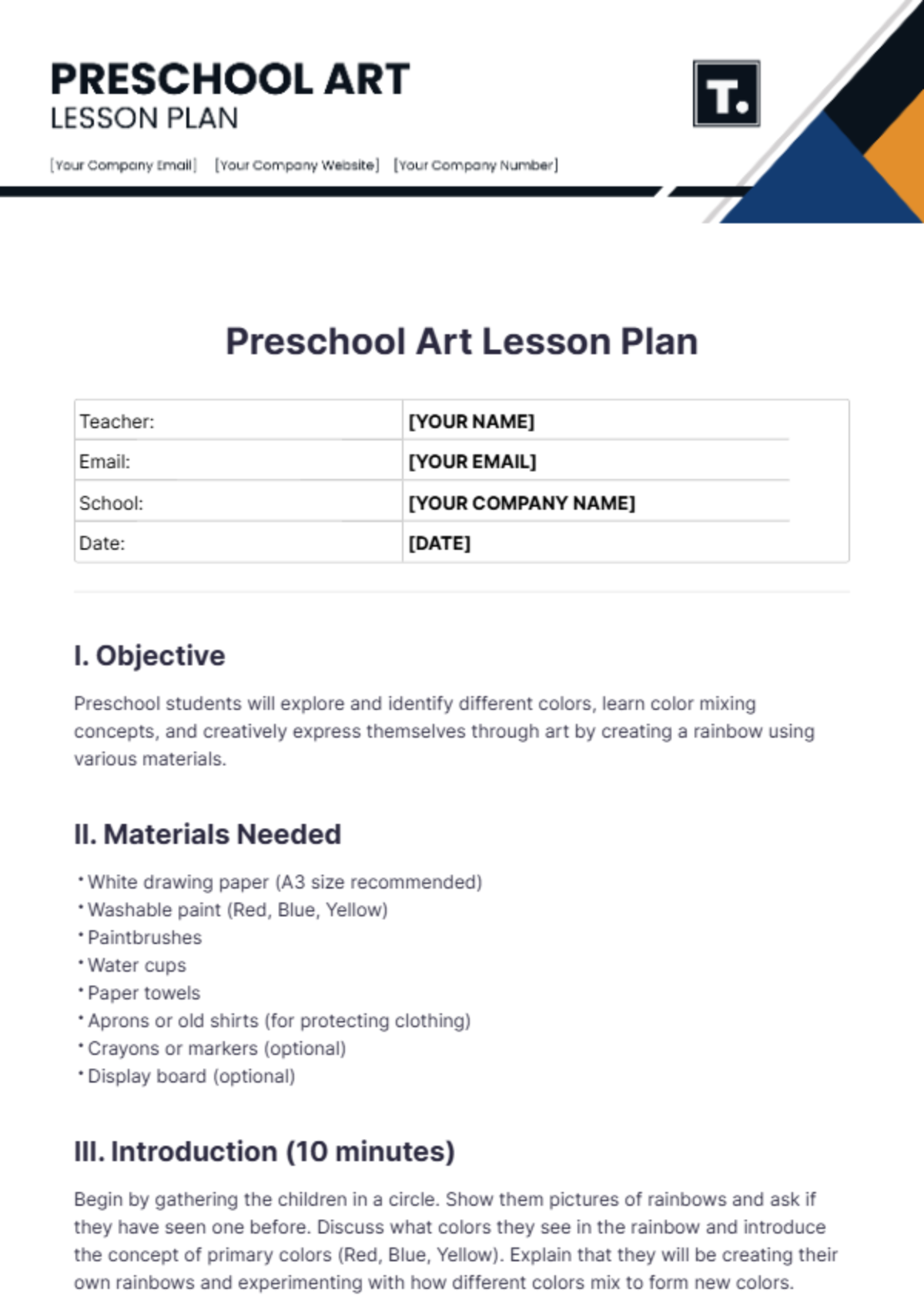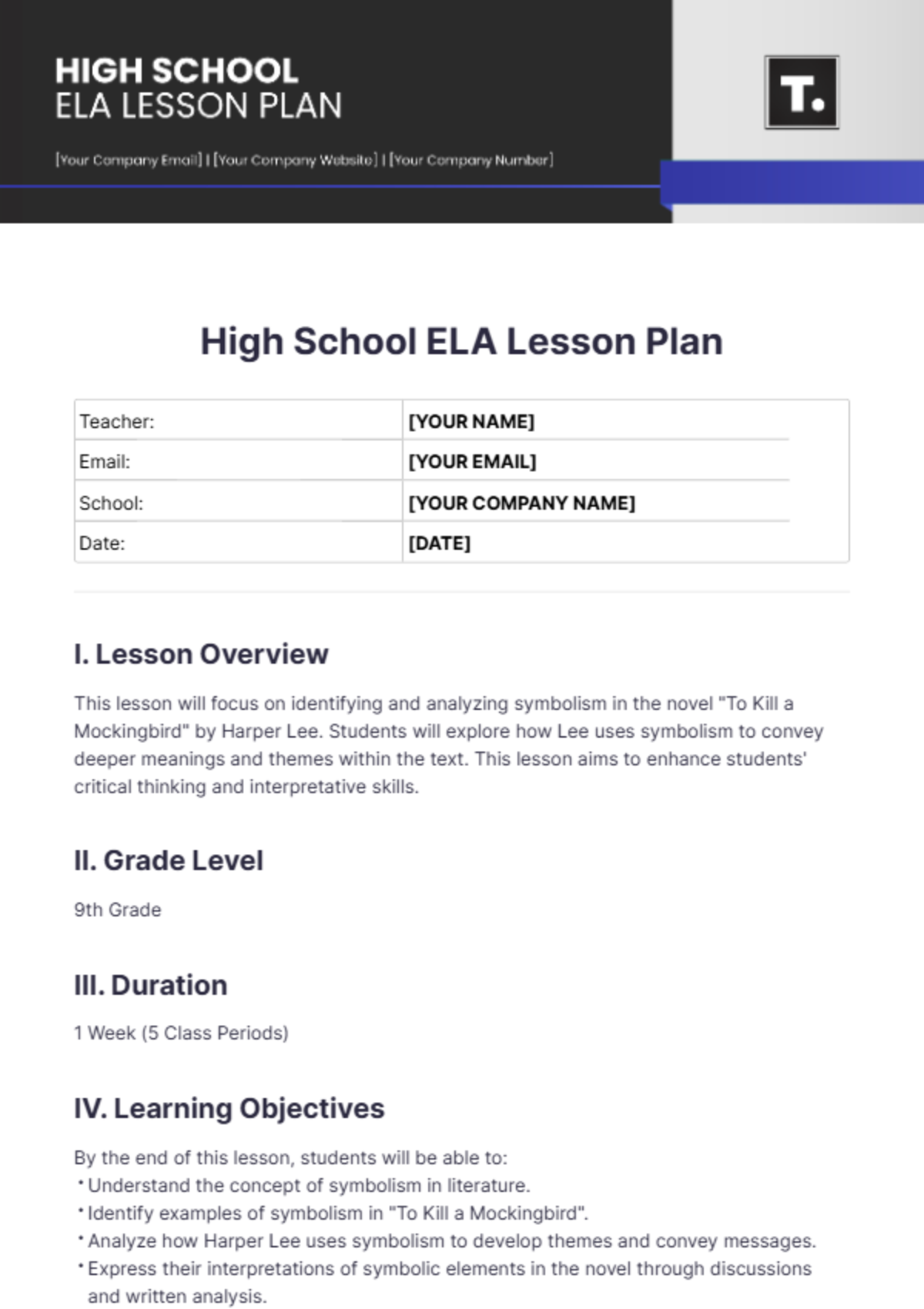Mini Lesson Plan
Instructor : | [Your Name] |
Email : | [Your Email] |
Institution : | [Your Company Name] |
Course Code : | LIT 101 |
I. Learning Objective
Students will be able to identify the structure, themes, and poetic techniques commonly found in Shakespearean sonnets.
II. Materials
Copies of selected Shakespearean sonnets (e.g., Sonnet 18, Sonnet 130)
Whiteboard or chart paper
Markers
III. Introduction
Engage students by asking them what they know about poetry and if they have heard of Shakespeare.
Explain that today's lesson will focus on understanding Shakespearean sonnets, a popular form of poetry written by William Shakespeare.
IV. Instruction
A. Structure of a Shakespearean Sonnet
Explain that a Shakespearean sonnet consists of 14 lines divided into three quatrains (four-line stanzas) followed by a rhymed couplet (two-line stanza).
Write the rhyme scheme (ABABCDCDEFEFGG) on the board and explain how it contributes to the sonnet's structure.
B. Themes in Shakespearean Sonnets
Discuss common themes found in Shakespearean sonnets, such as love, time, beauty, and mortality.
Read and analyze excerpts from selected sonnets to illustrate these themes.
C. Poetic Techniques
Introduce poetic techniques commonly used in Shakespearean sonnets, such as iambic pentameter, metaphor, simile, and personification.
Provide examples from the sonnets and discuss how these techniques enhance the poet's message and imagery.
V. Guided Practice
Divide students into small groups and provide each group with a different Shakespearean sonnet.
Instruct groups to identify the structure, themes, and poetic techniques present in their assigned sonnet.
Circulate among groups to provide guidance and answer questions.
Reconvene as a class and have each group share their findings about their assigned sonnet.
Summarize the key points discussed during the lesson, emphasizing the importance of understanding the structure, themes, and poetic techniques in Shakespearean sonnets.
VI. Assessment
Informal assessment through class discussions: Observe students' participation in class discussions about the structure, themes, and poetic techniques of Shakespearean sonnets. Take note of their ability to articulate their understanding and engage with the material.
Group presentations: Evaluate students' ability to analyze and present their findings about their assigned sonnet to the class. Assess their comprehension of the sonnet's structure, themes, and poetic techniques, as well as their communication skills and ability to work collaboratively.
Feedback: Provide constructive feedback to students based on their contributions to class discussions and group presentations. Offer specific praise for insightful observations and suggestions for improvement as needed.
VII. Extension
Sonnet Writing Workshop: Organize a workshop where students can apply their knowledge of Shakespearean sonnets to write their own poems in the same style. Provide guidance on poetic structure, themes, and techniques, and encourage students to explore their creativity.
Comparative Analysis: Assign students to compare and contrast a Shakespearean sonnet with a poem from another poet or literary tradition. Encourage them to analyze similarities and differences in form, content, and style, and to consider how cultural context influences poetic expression.

